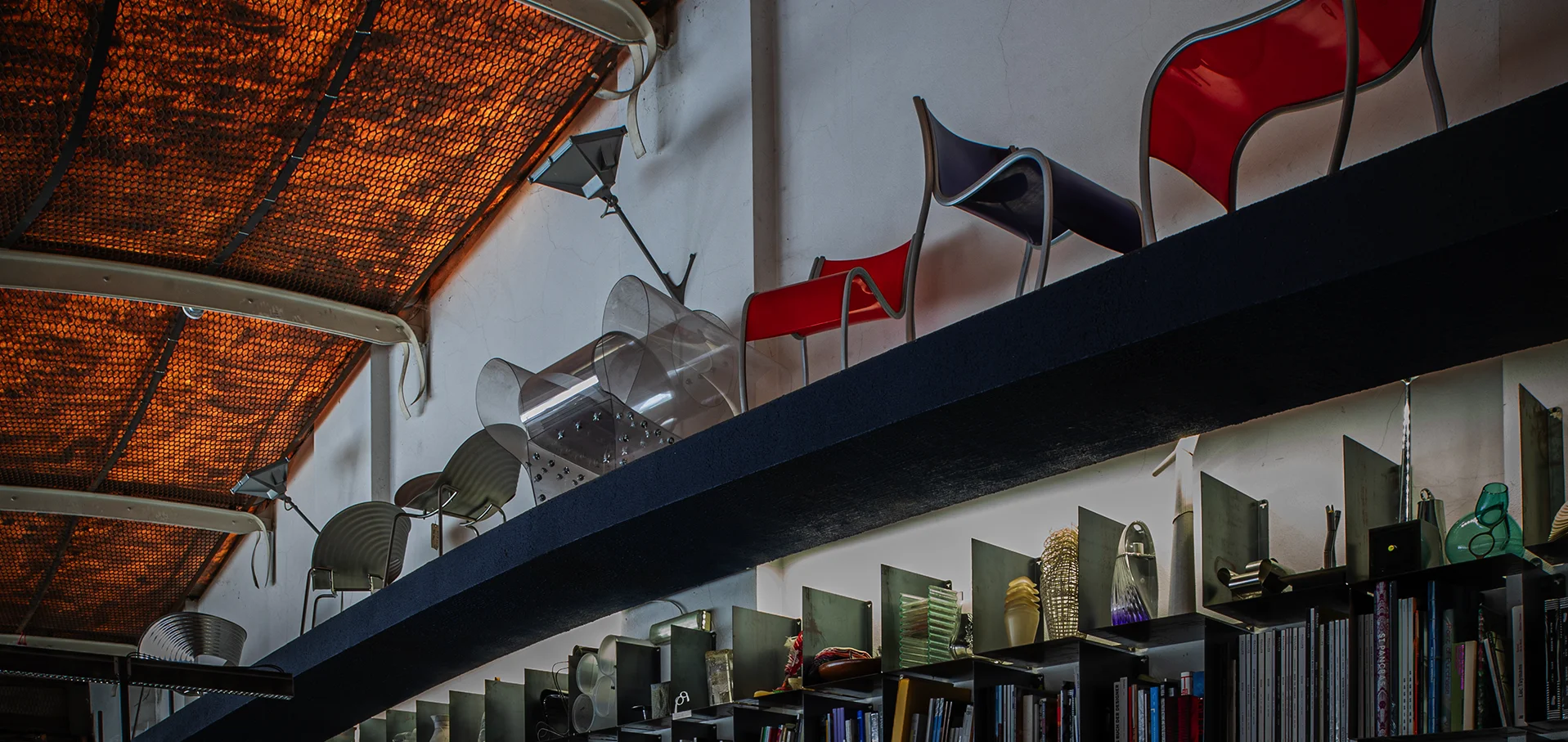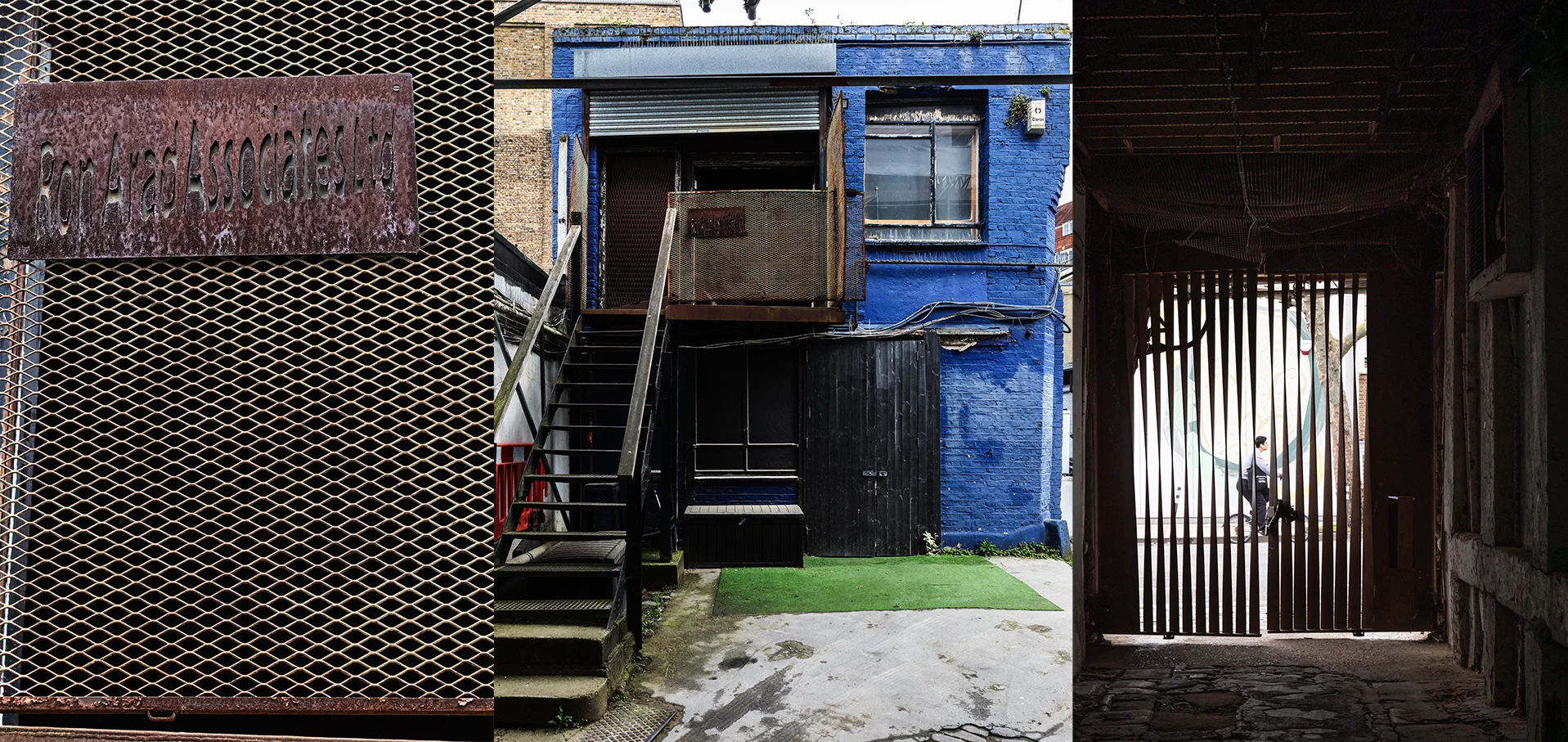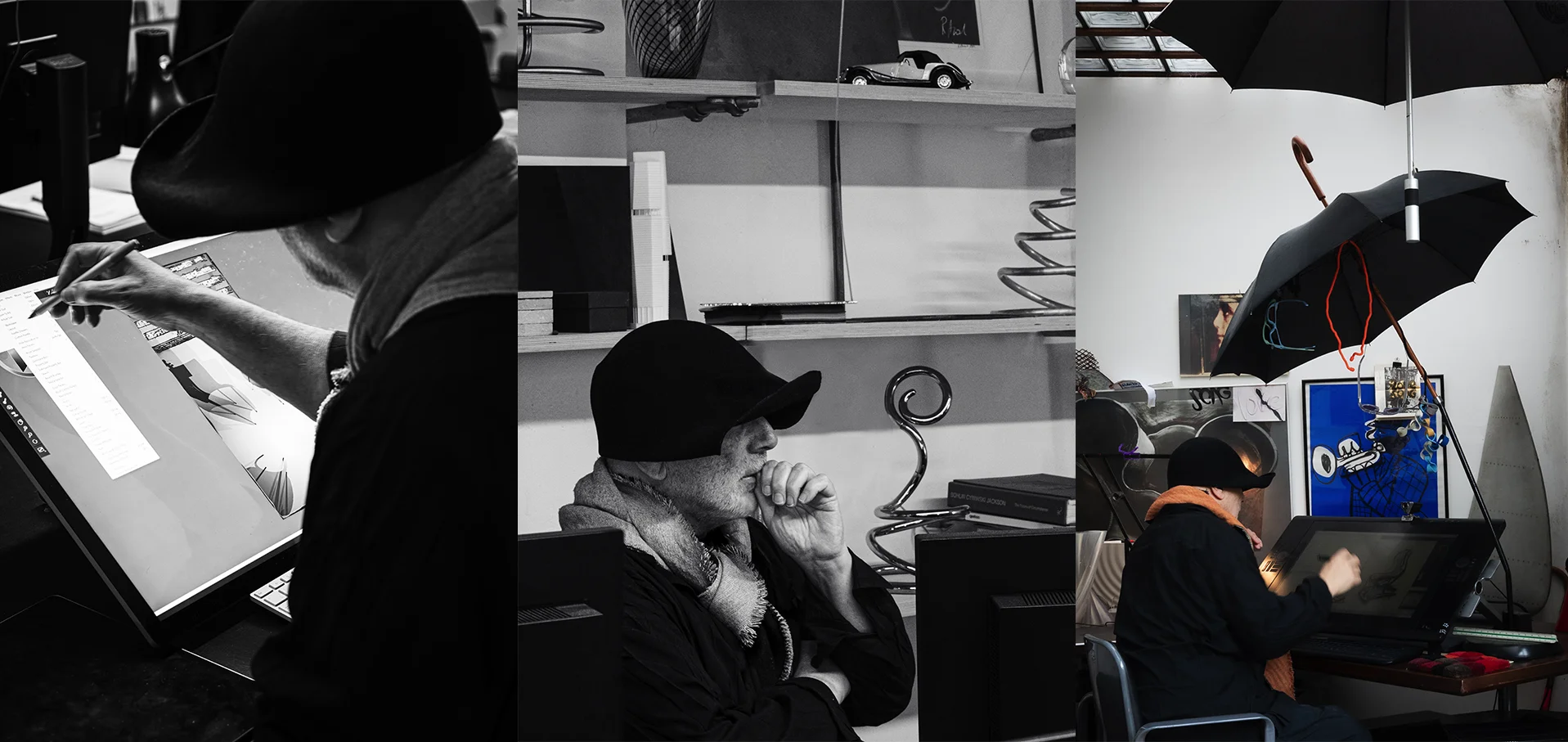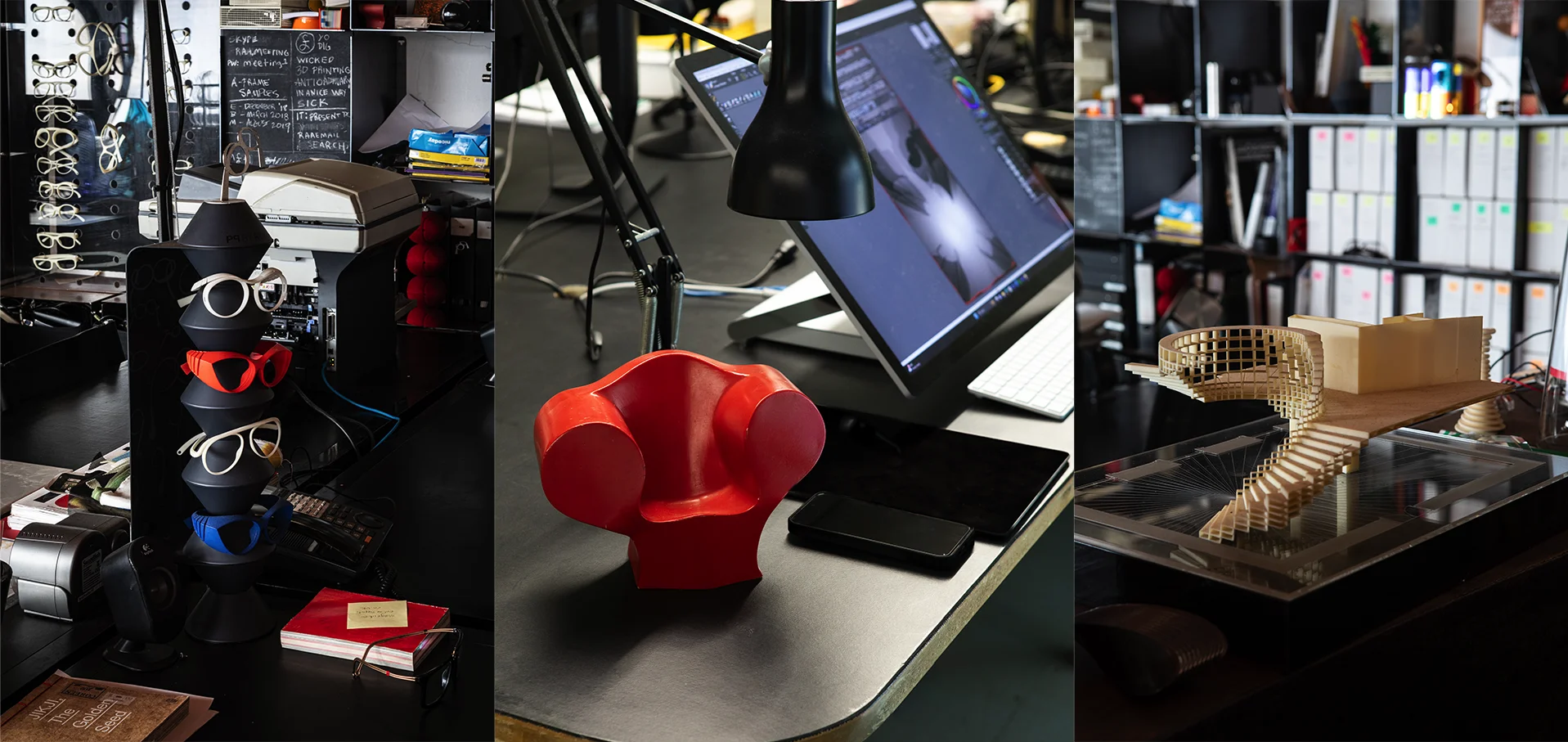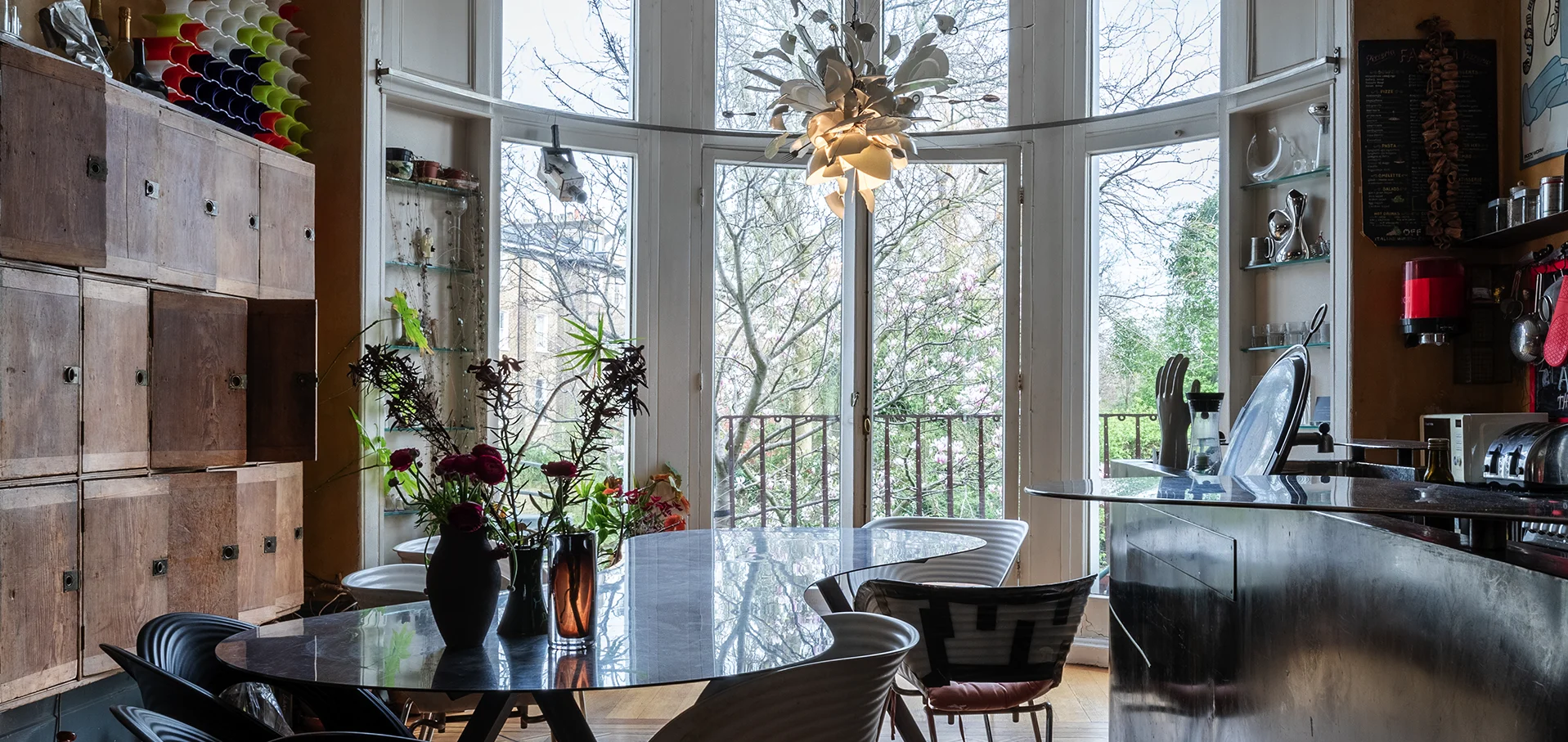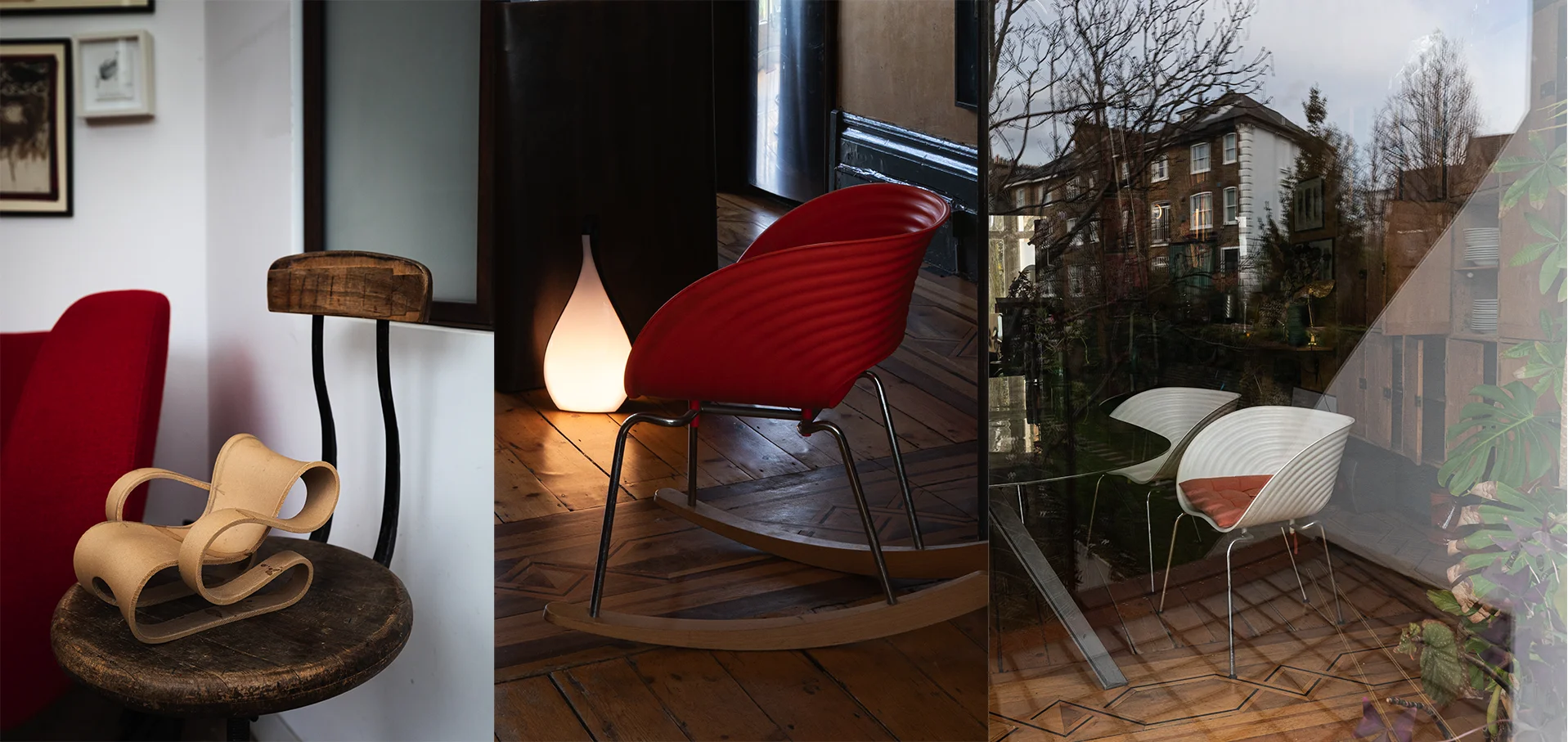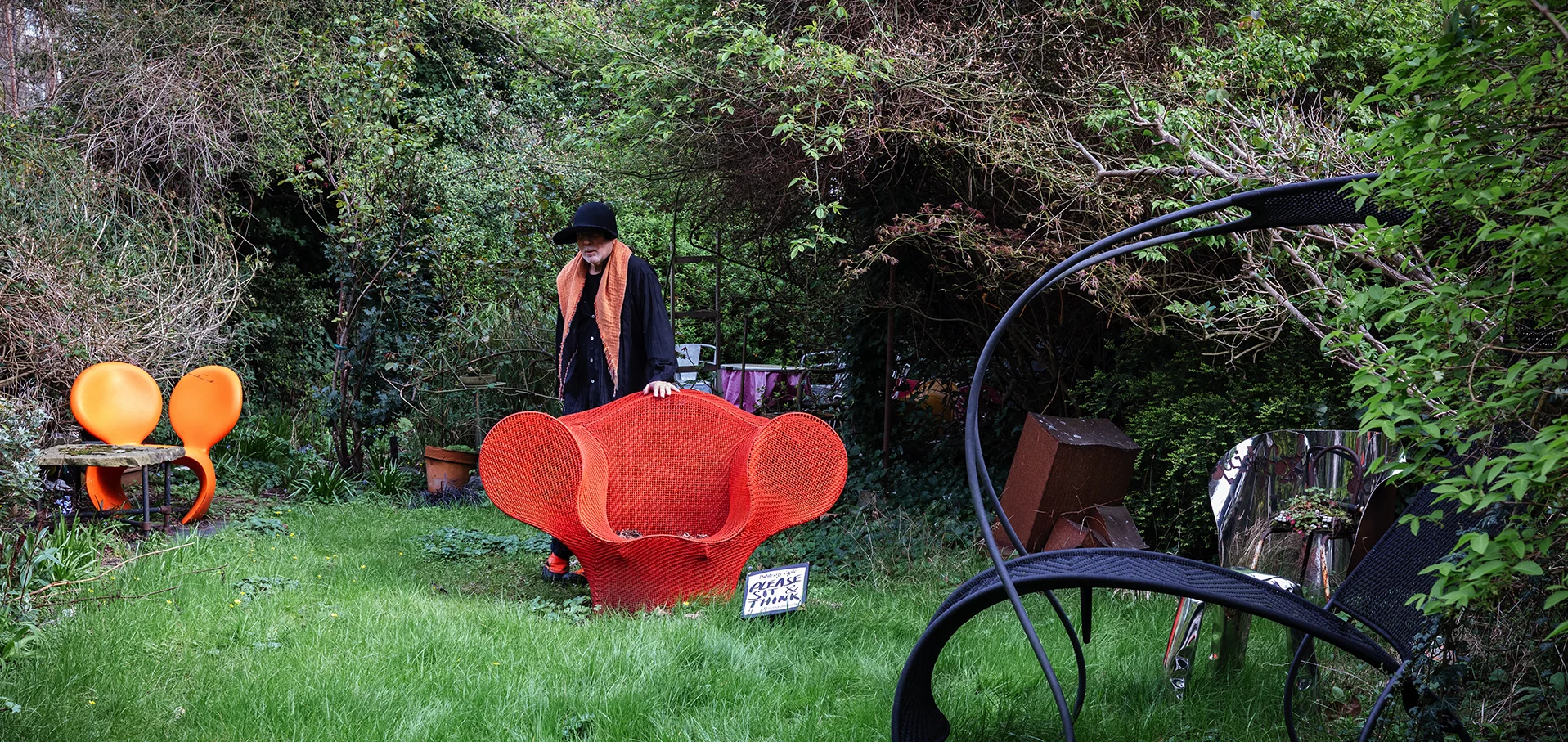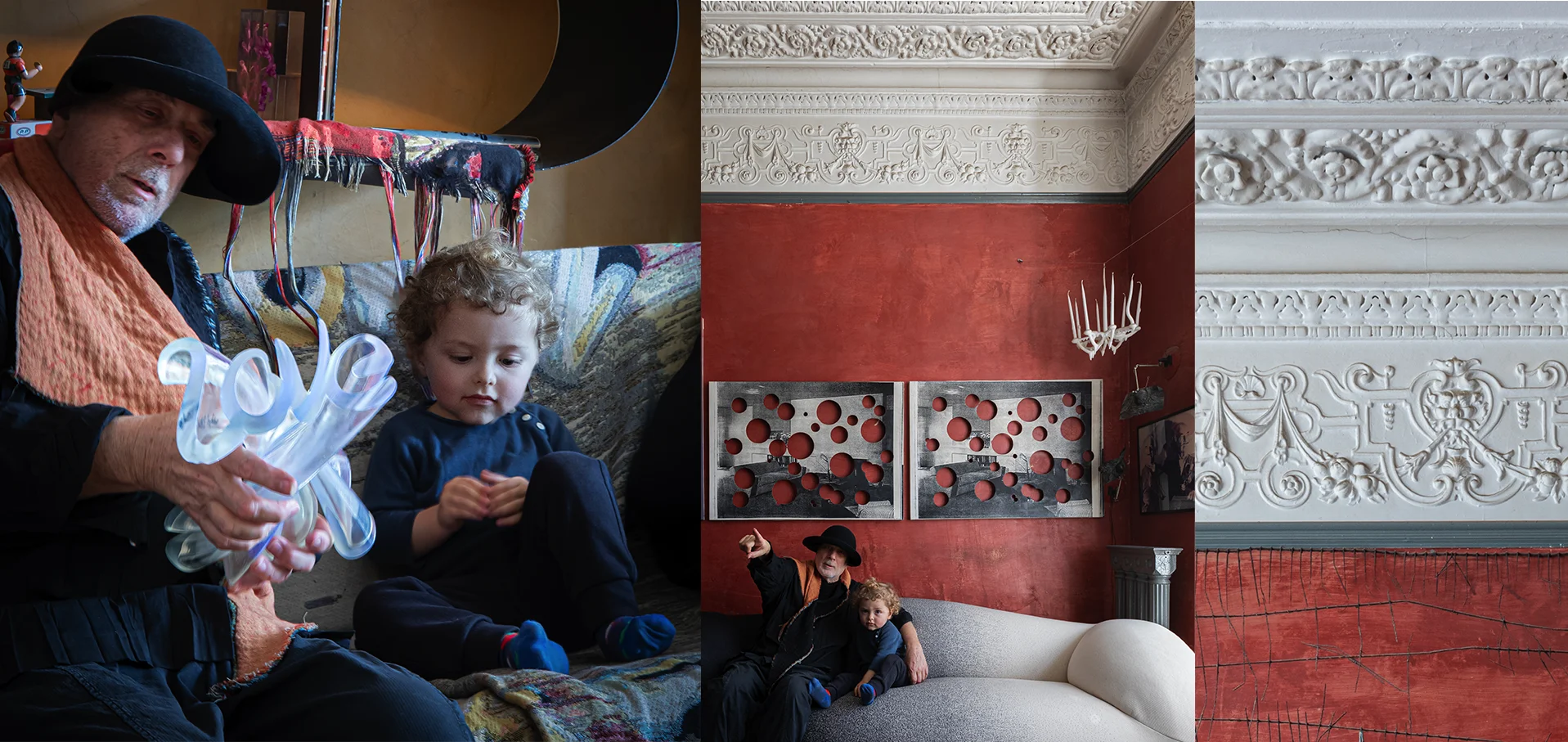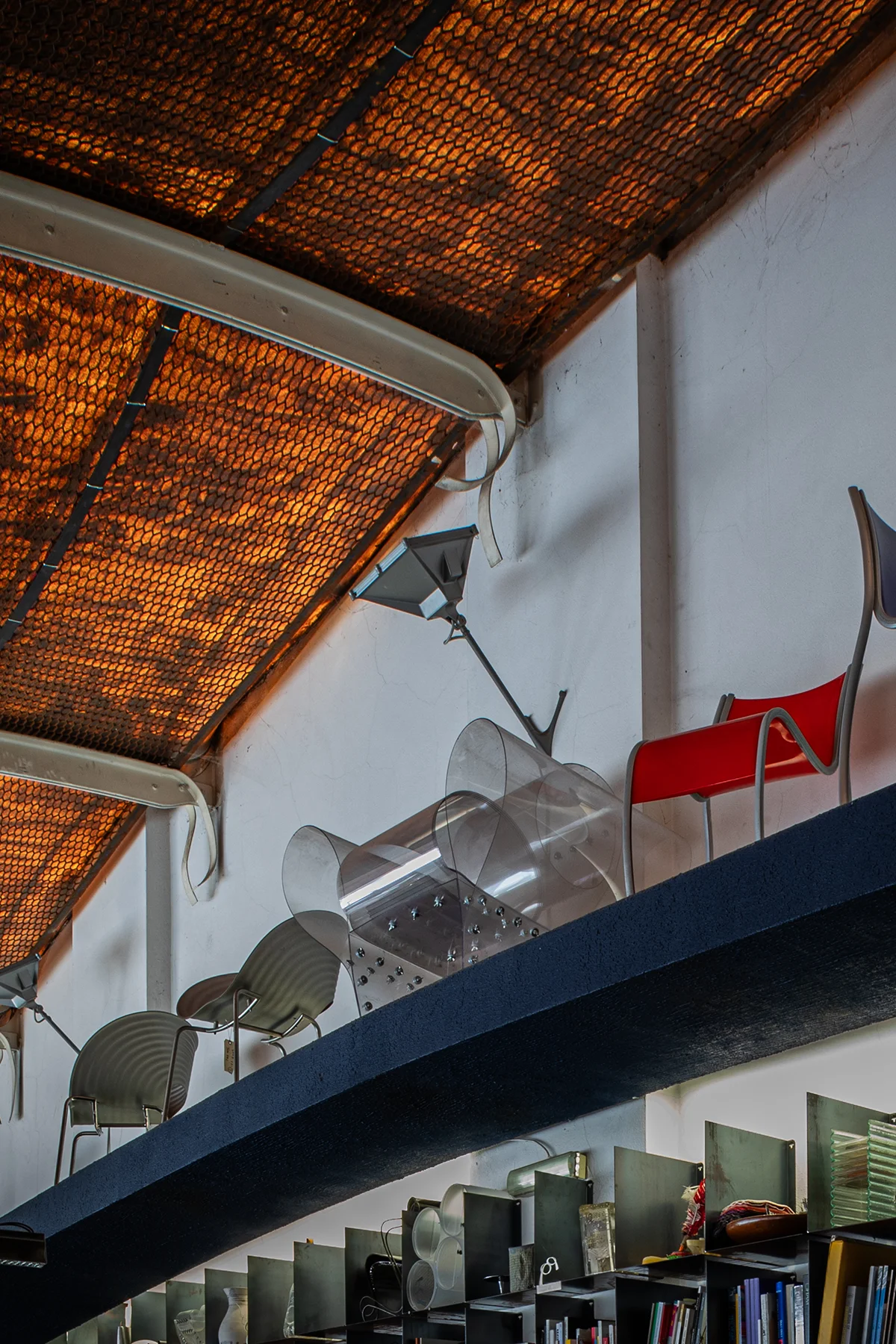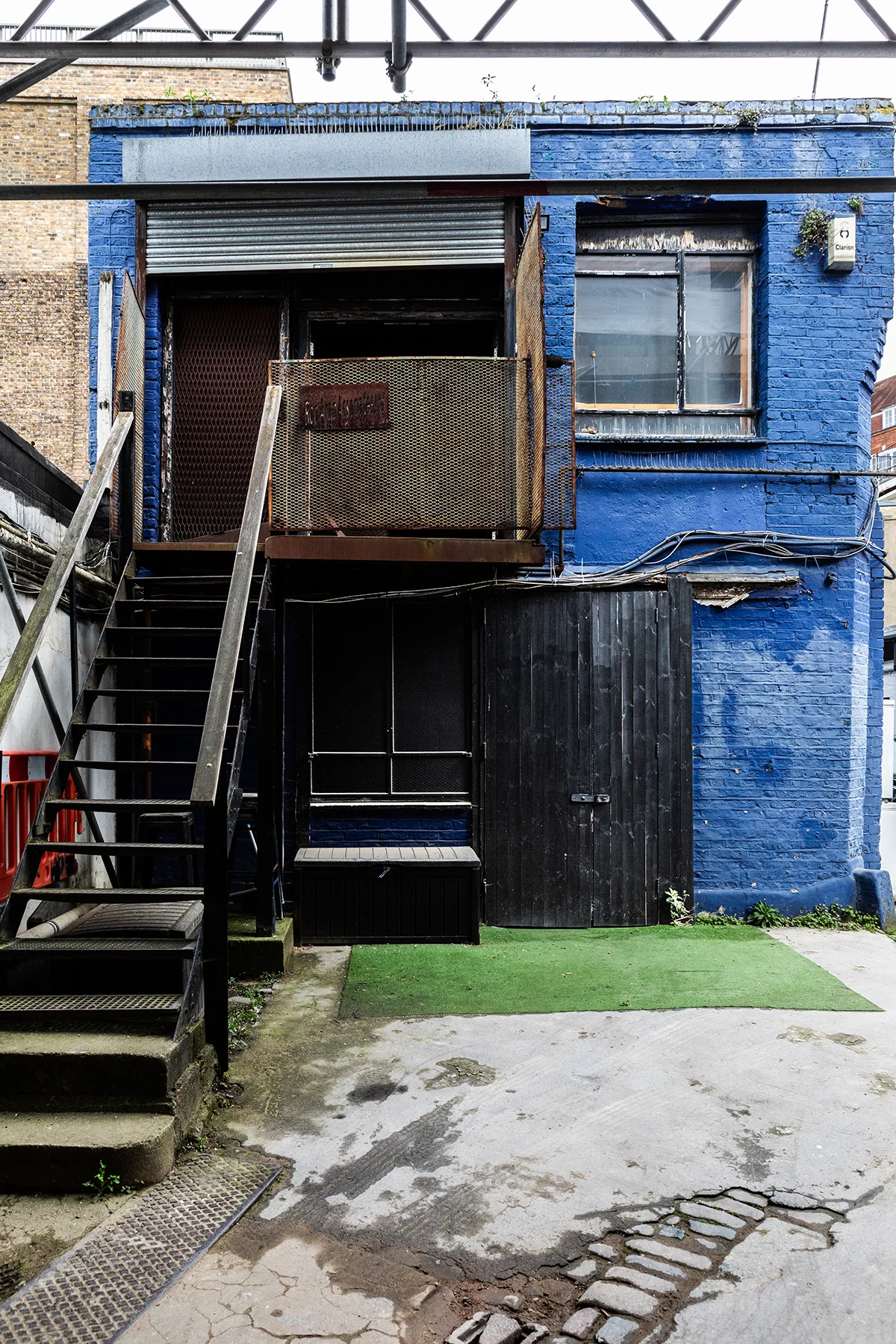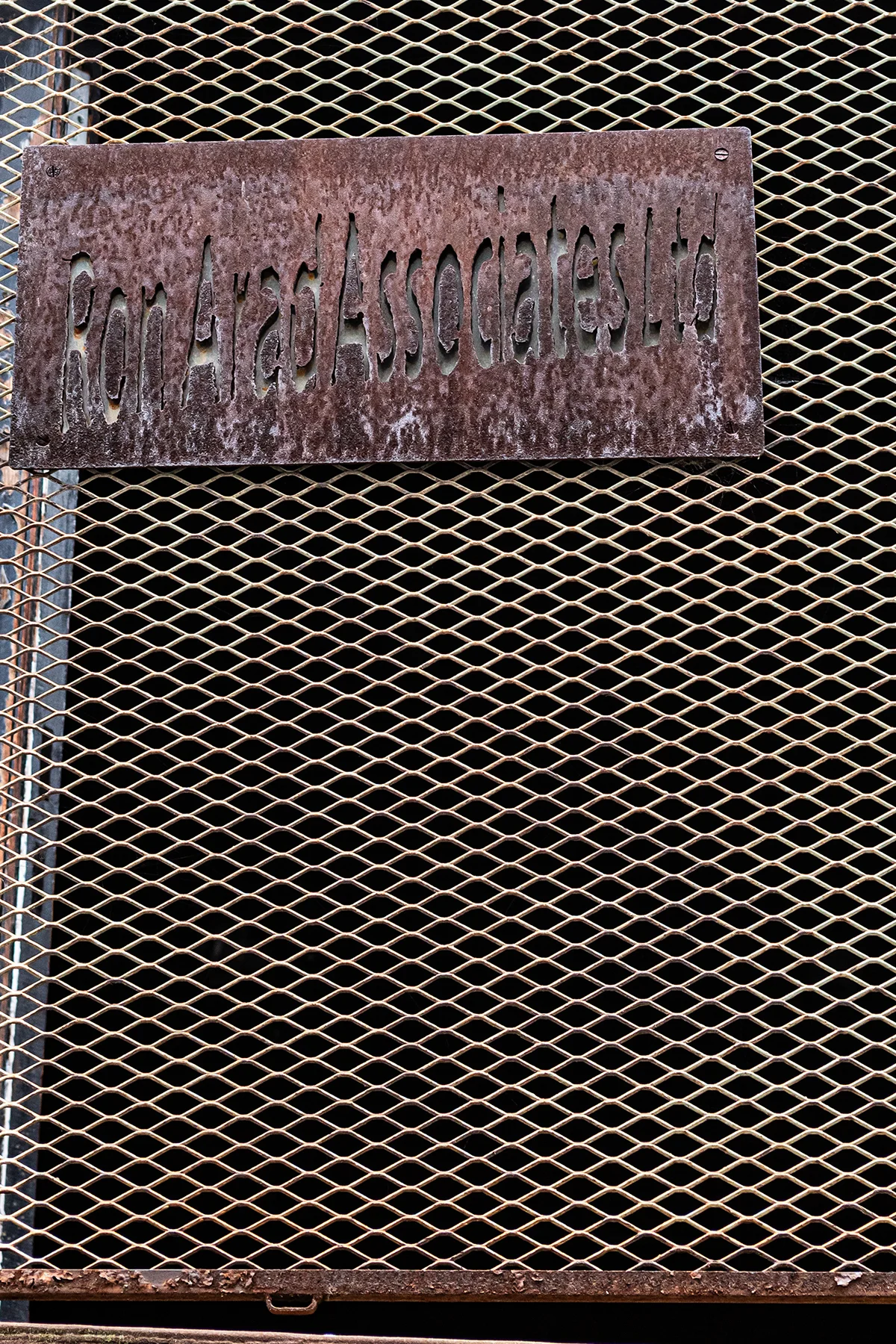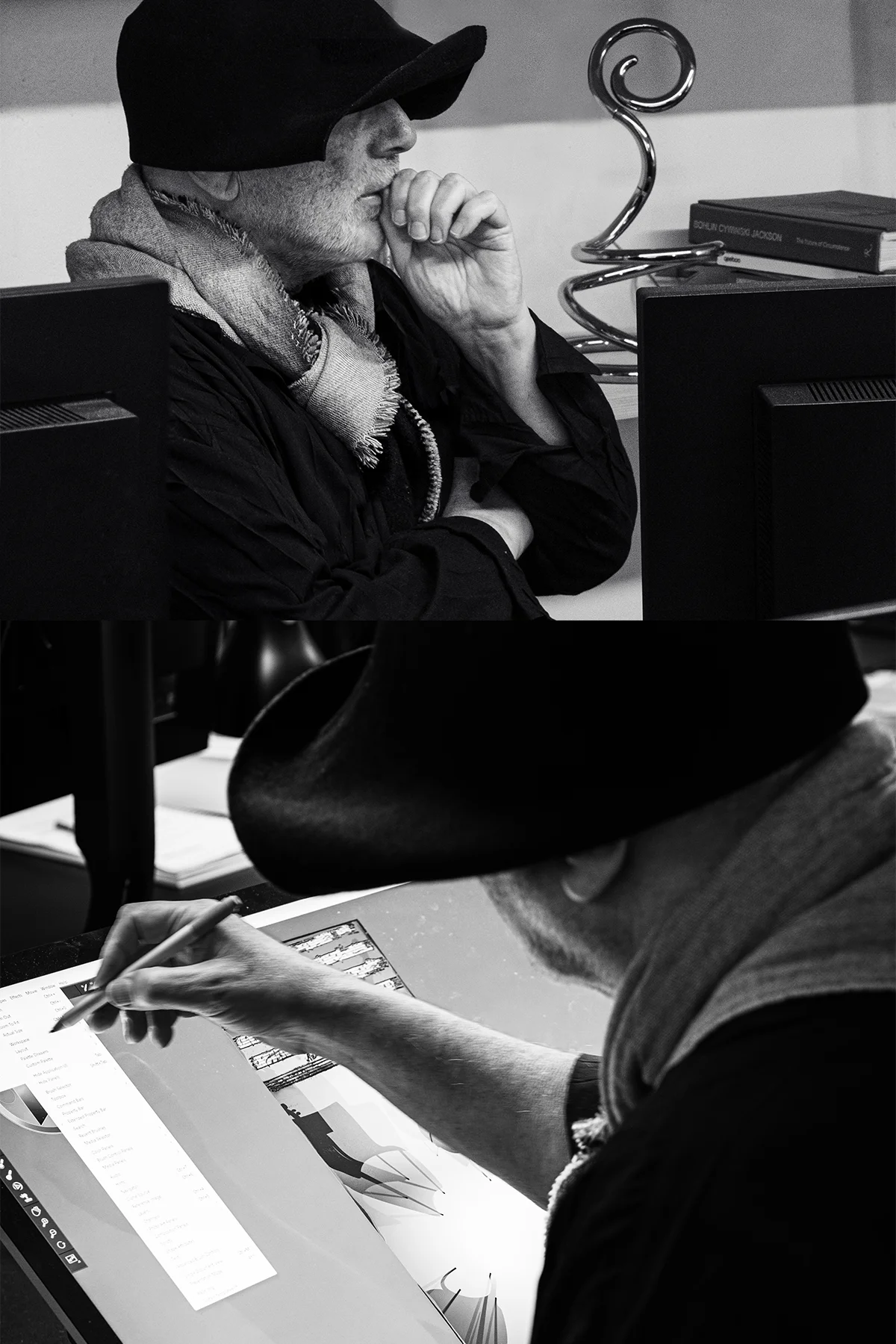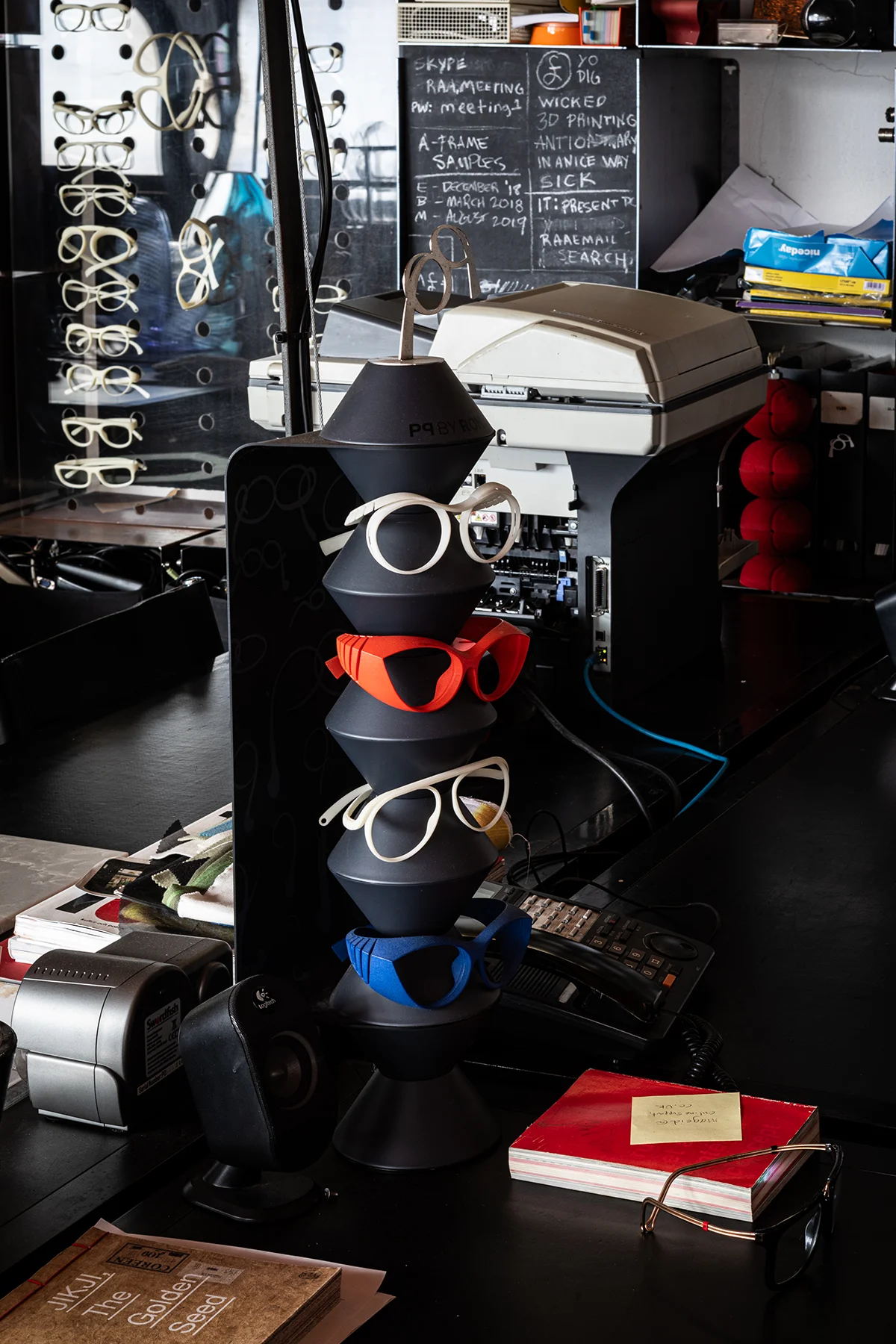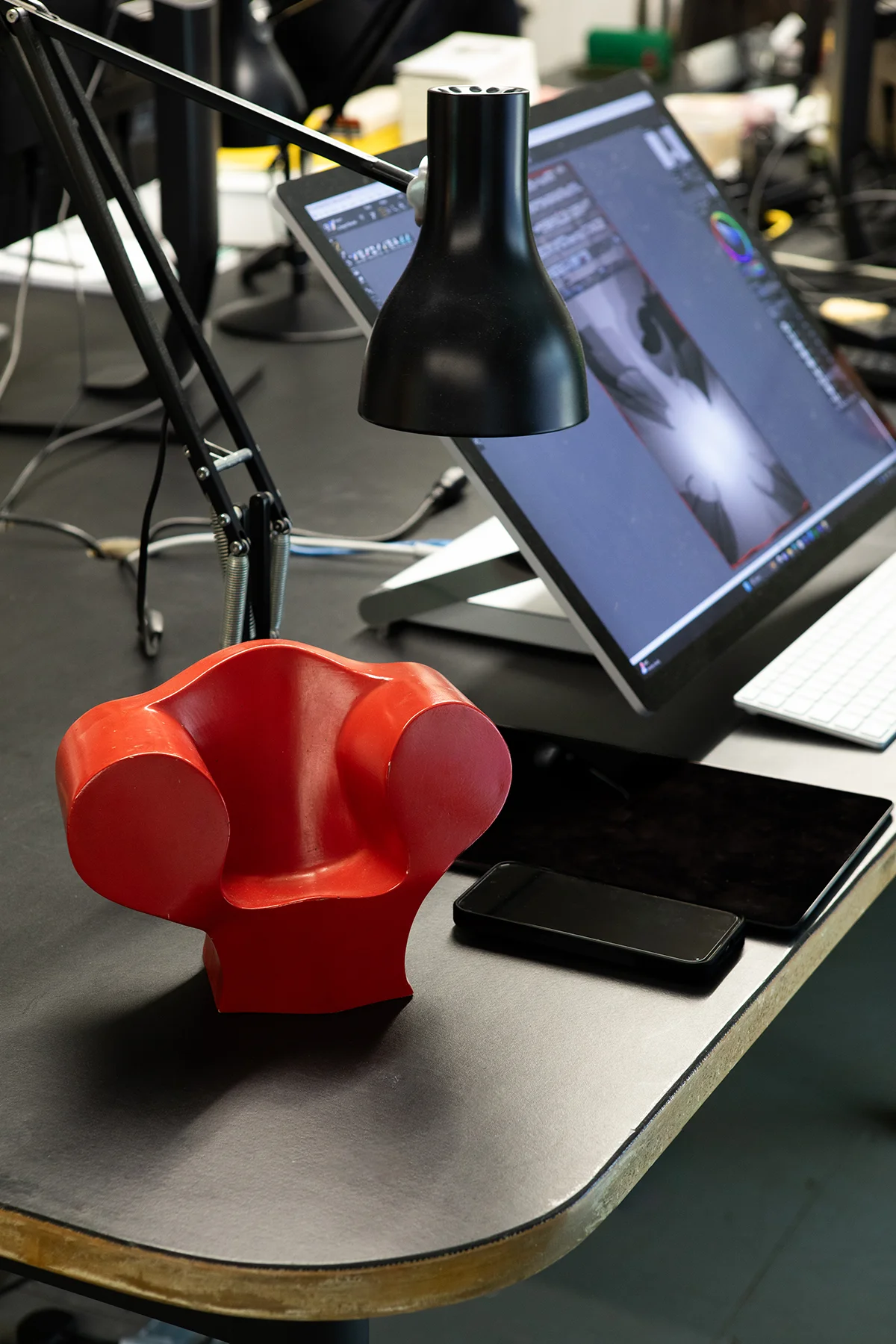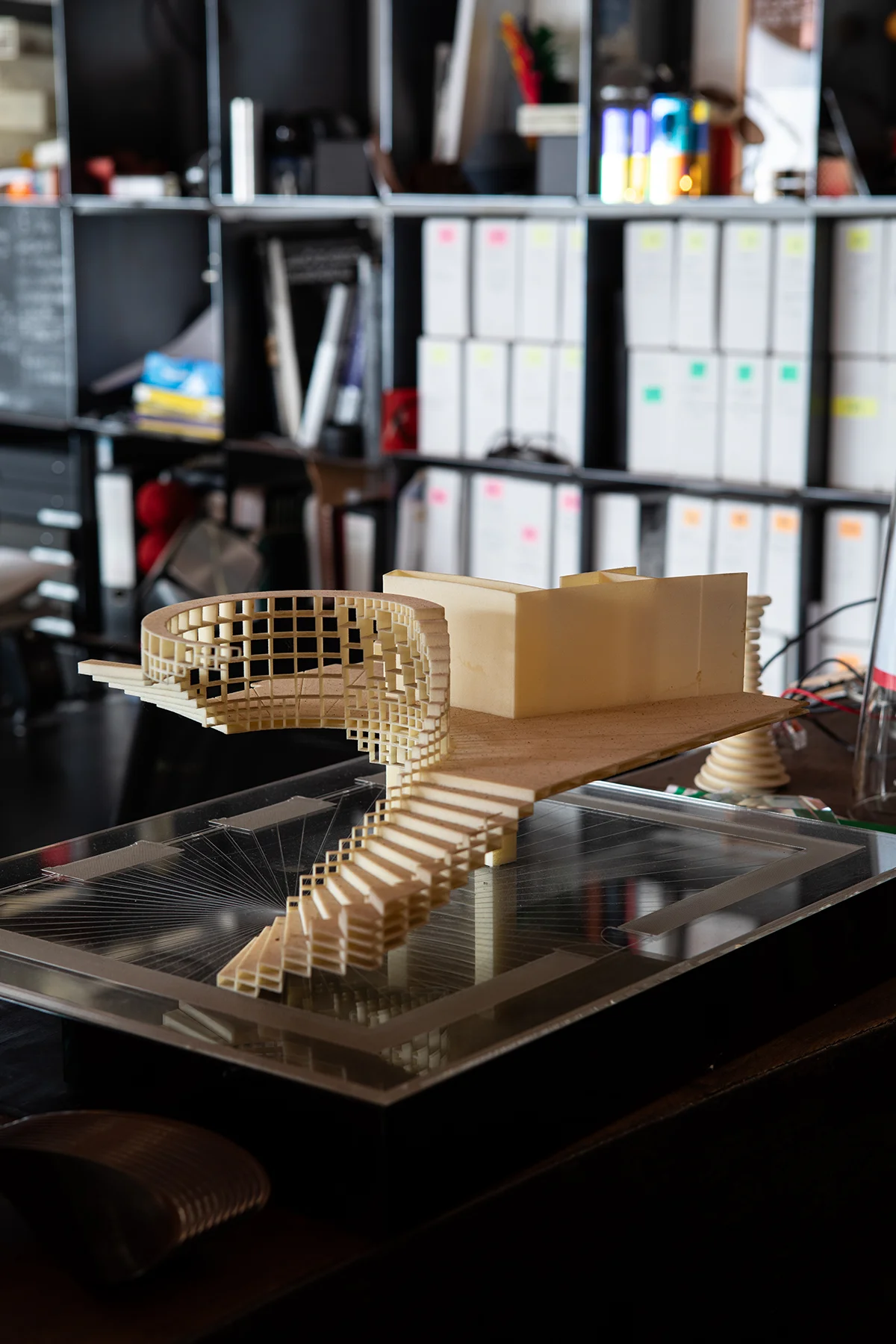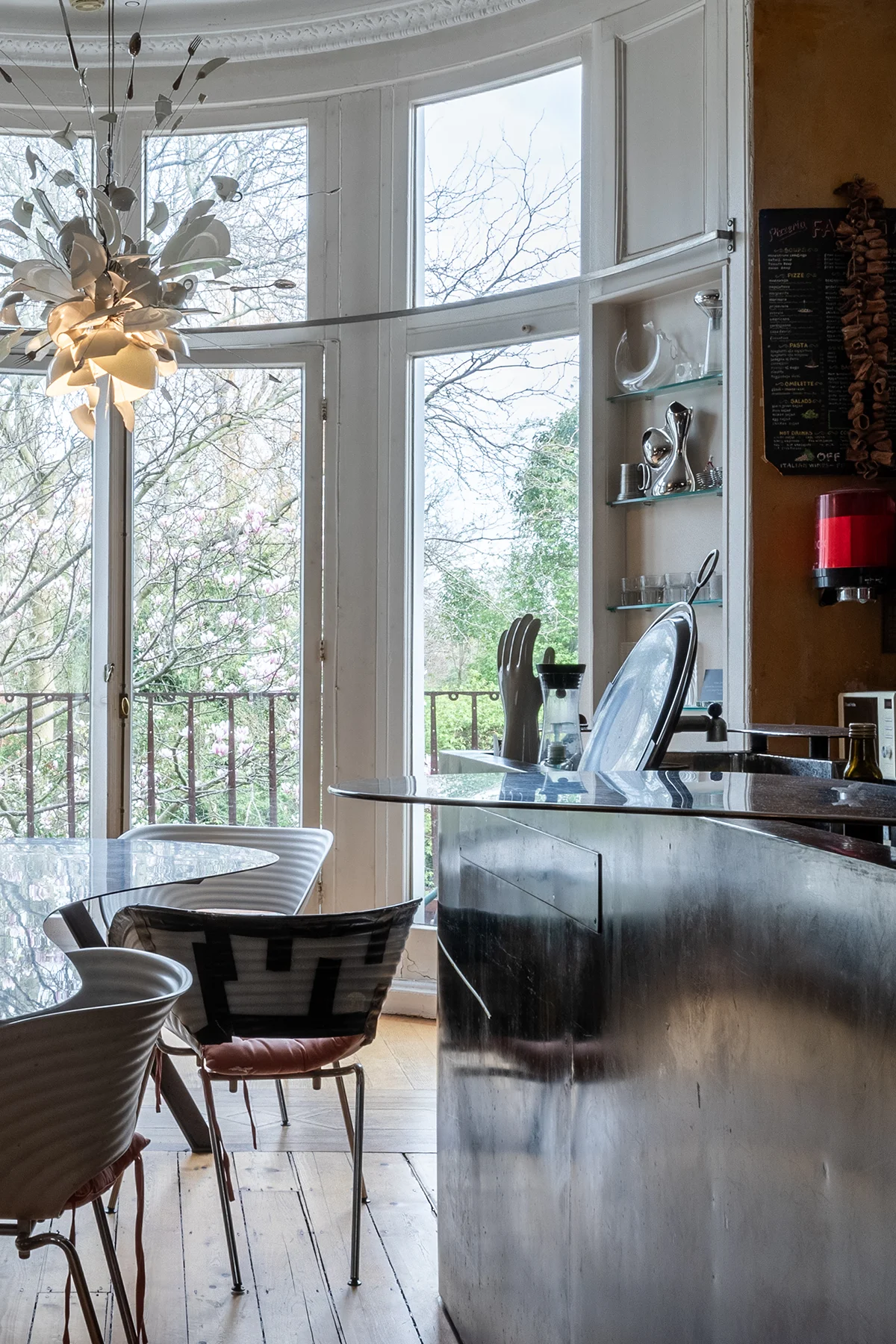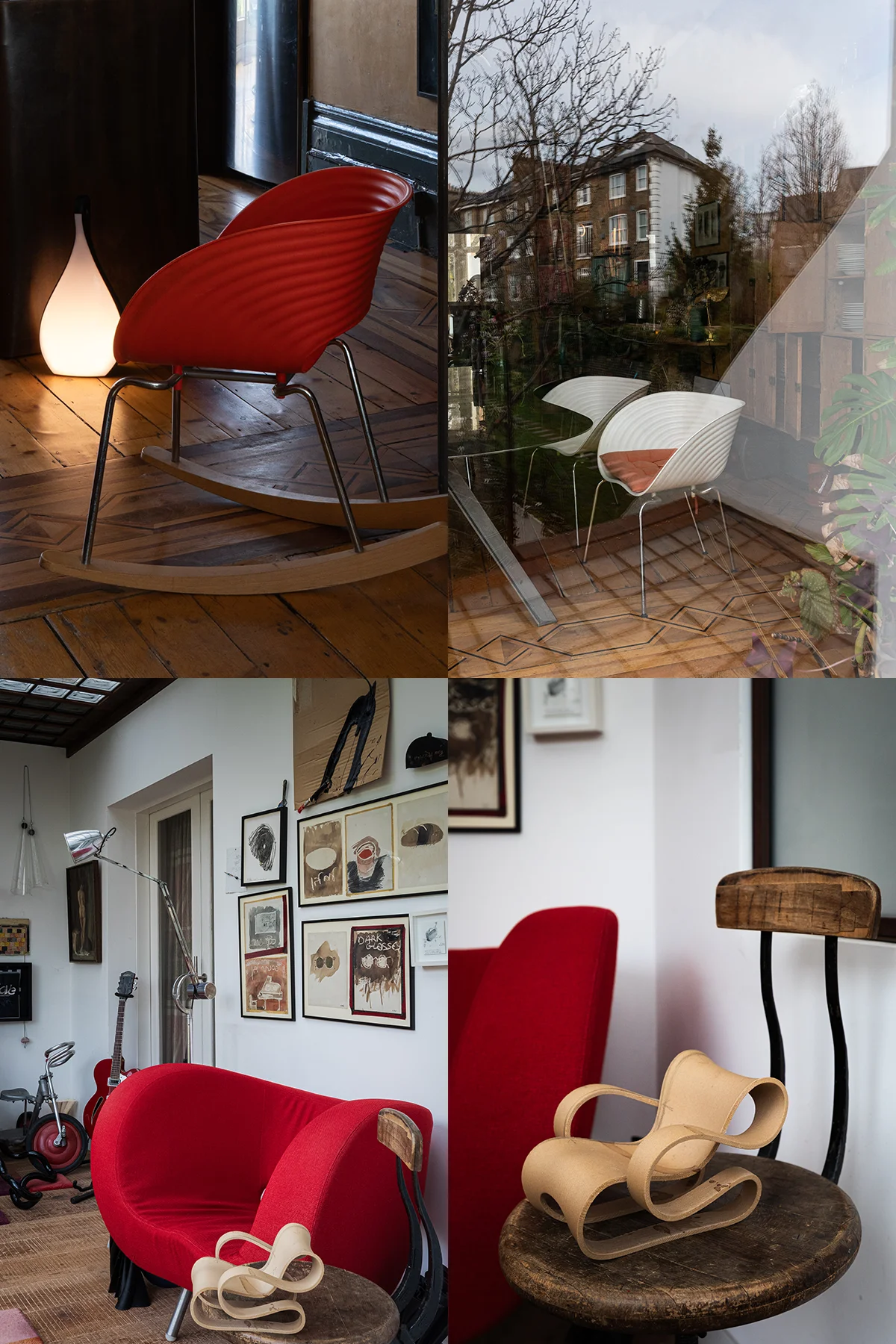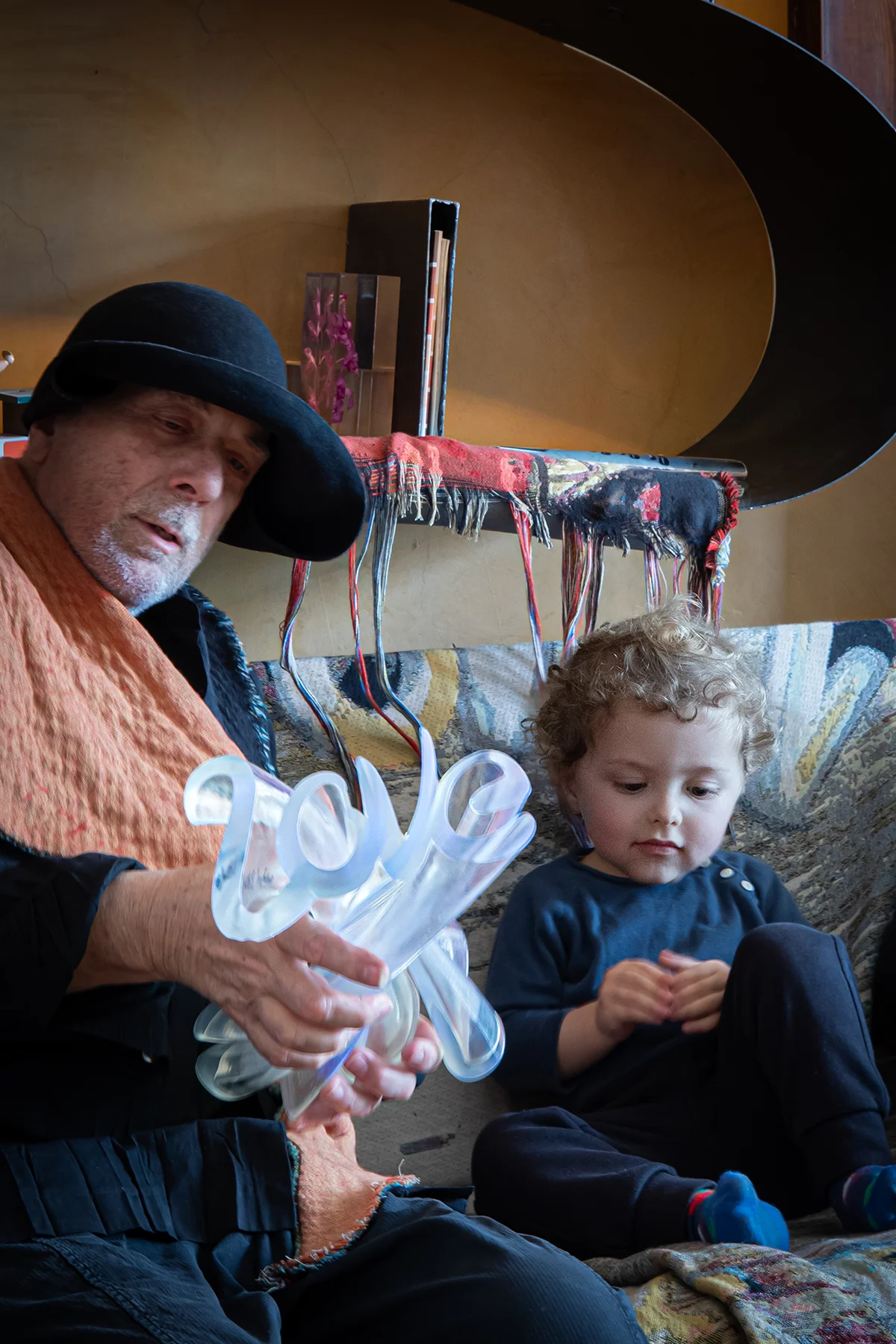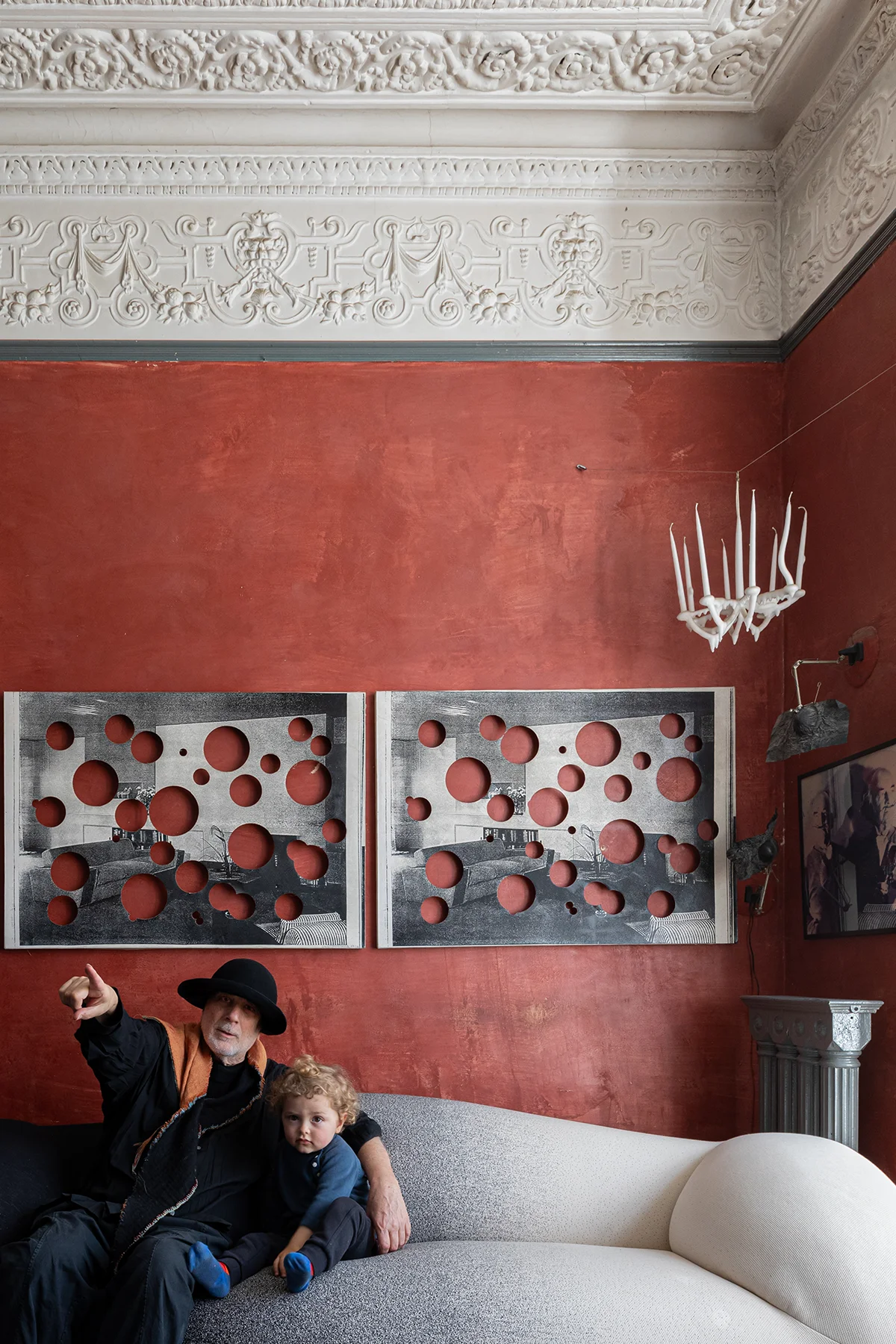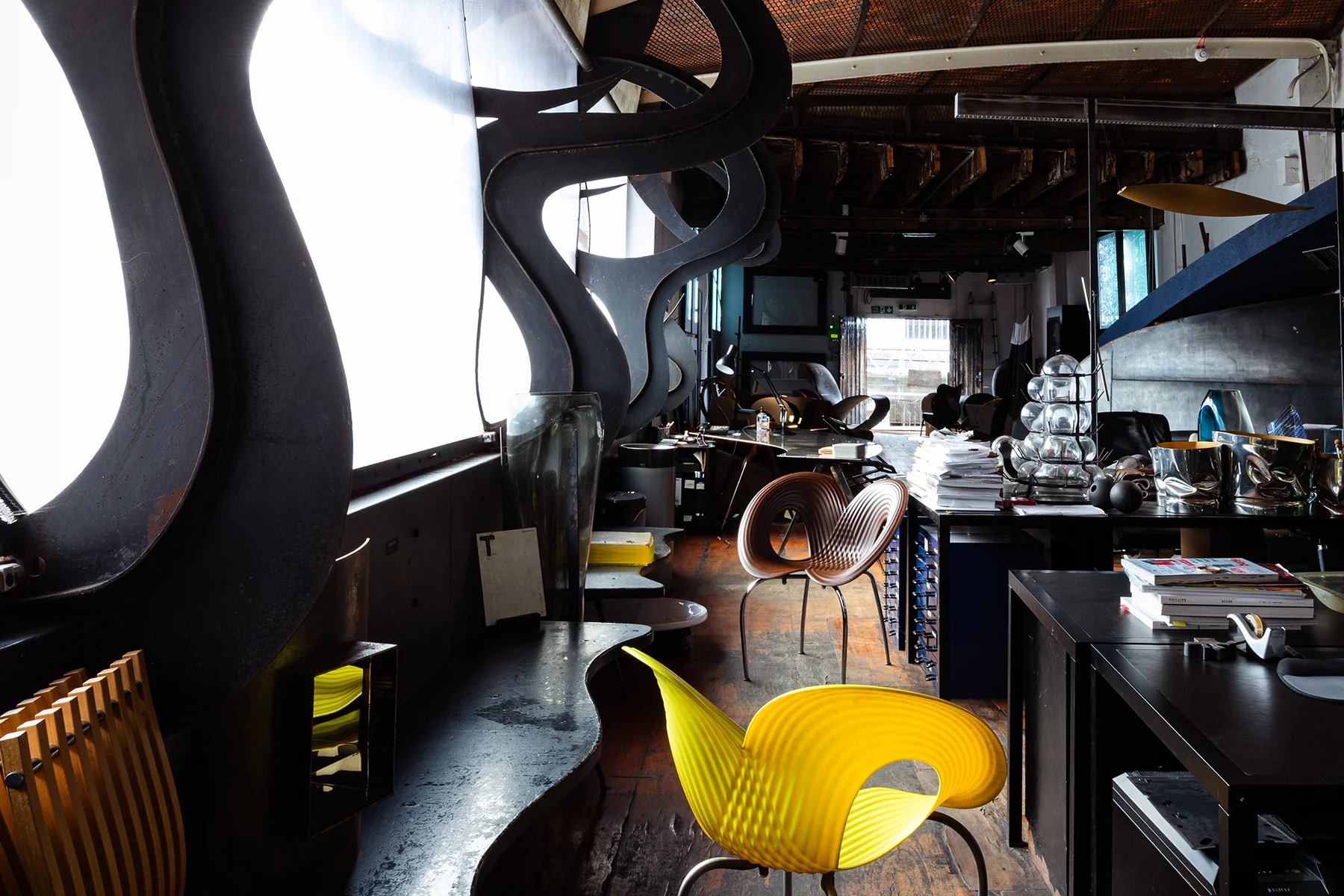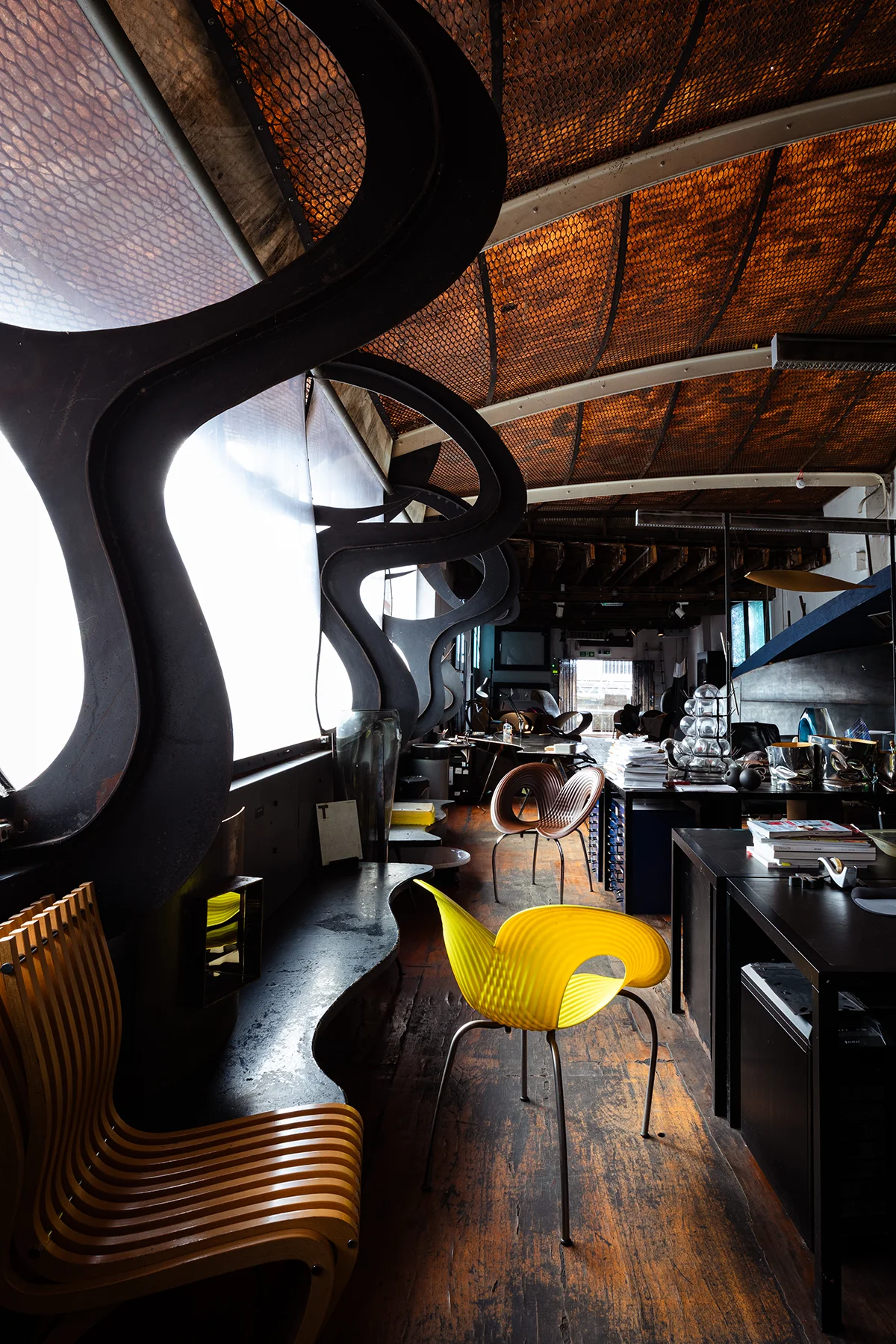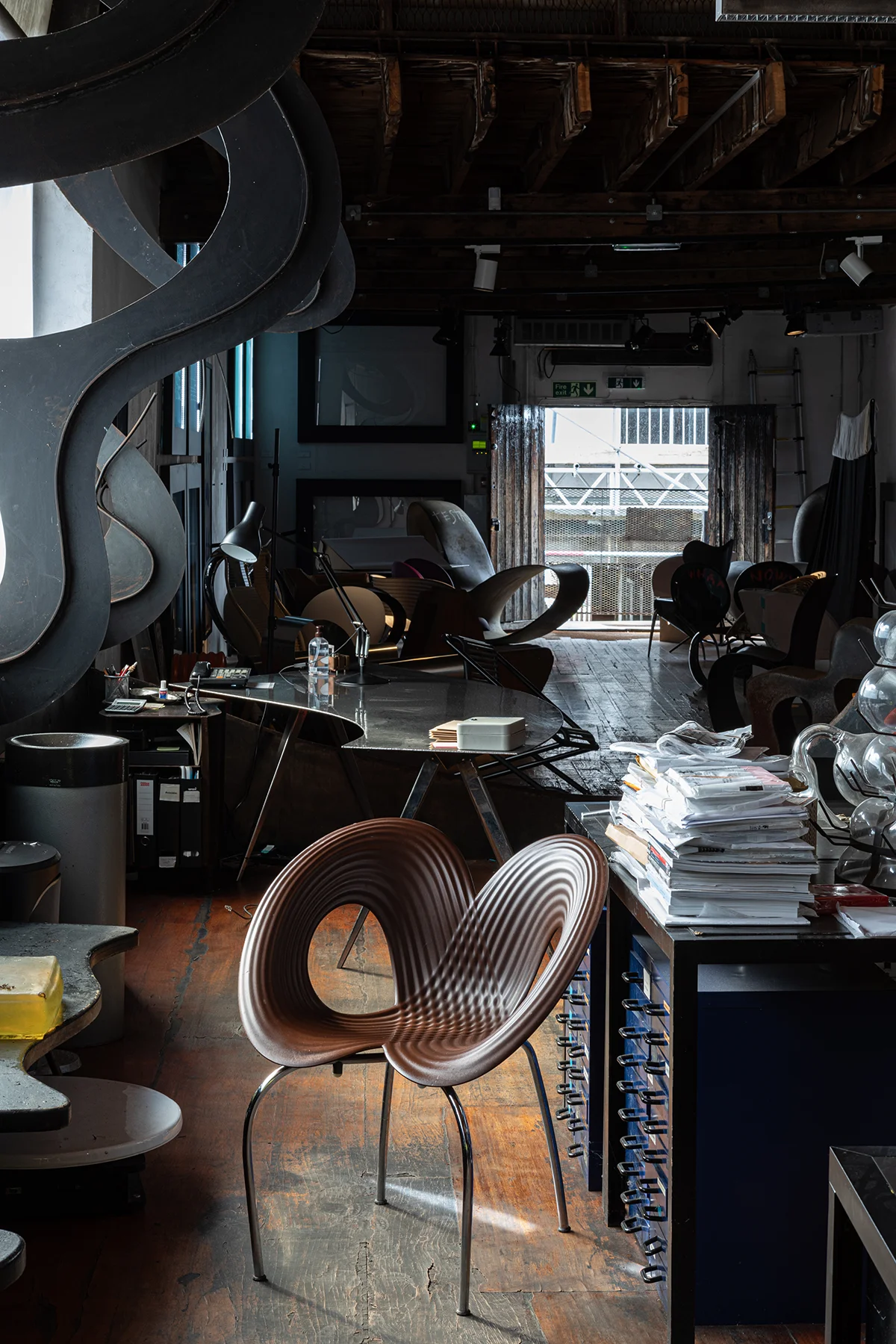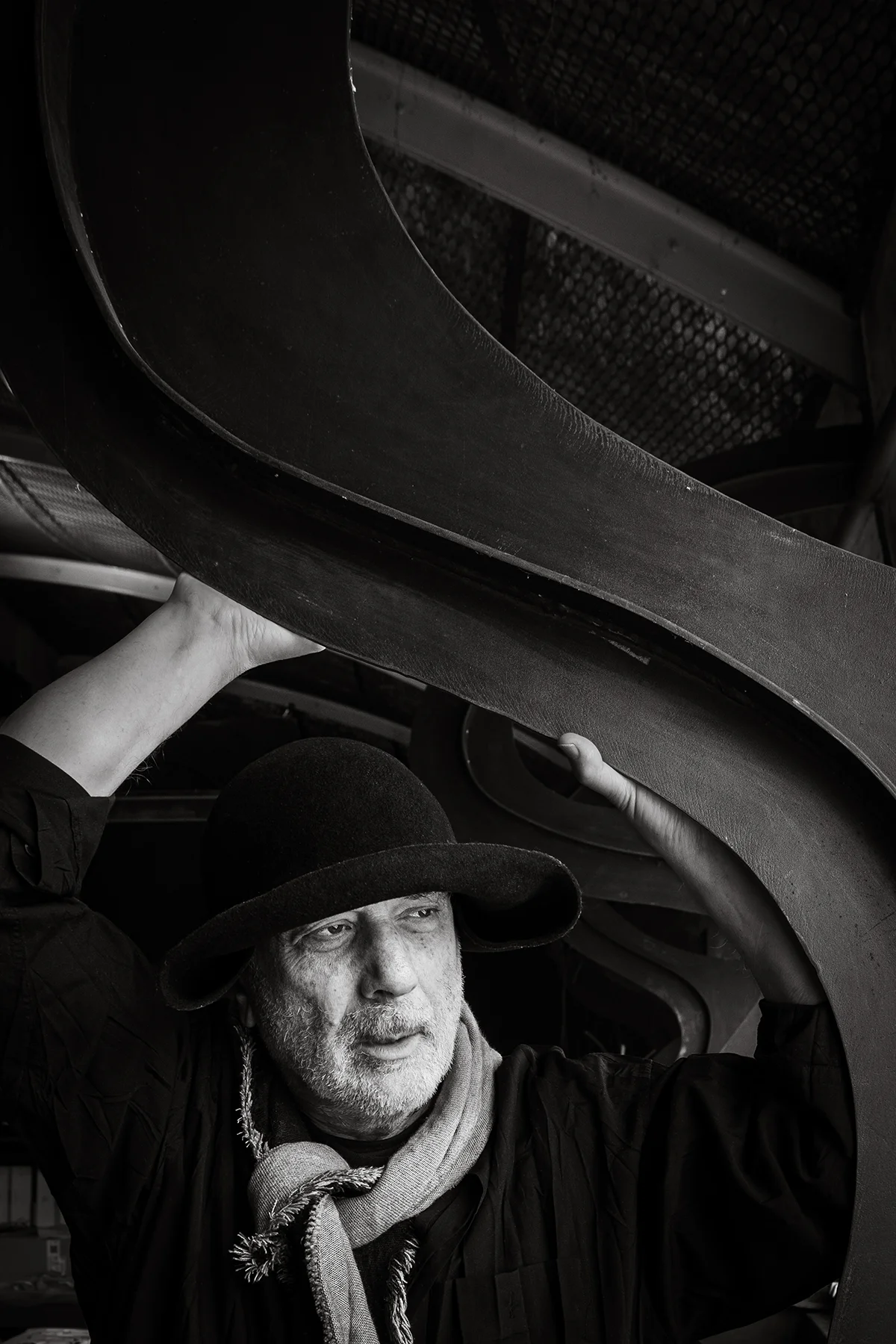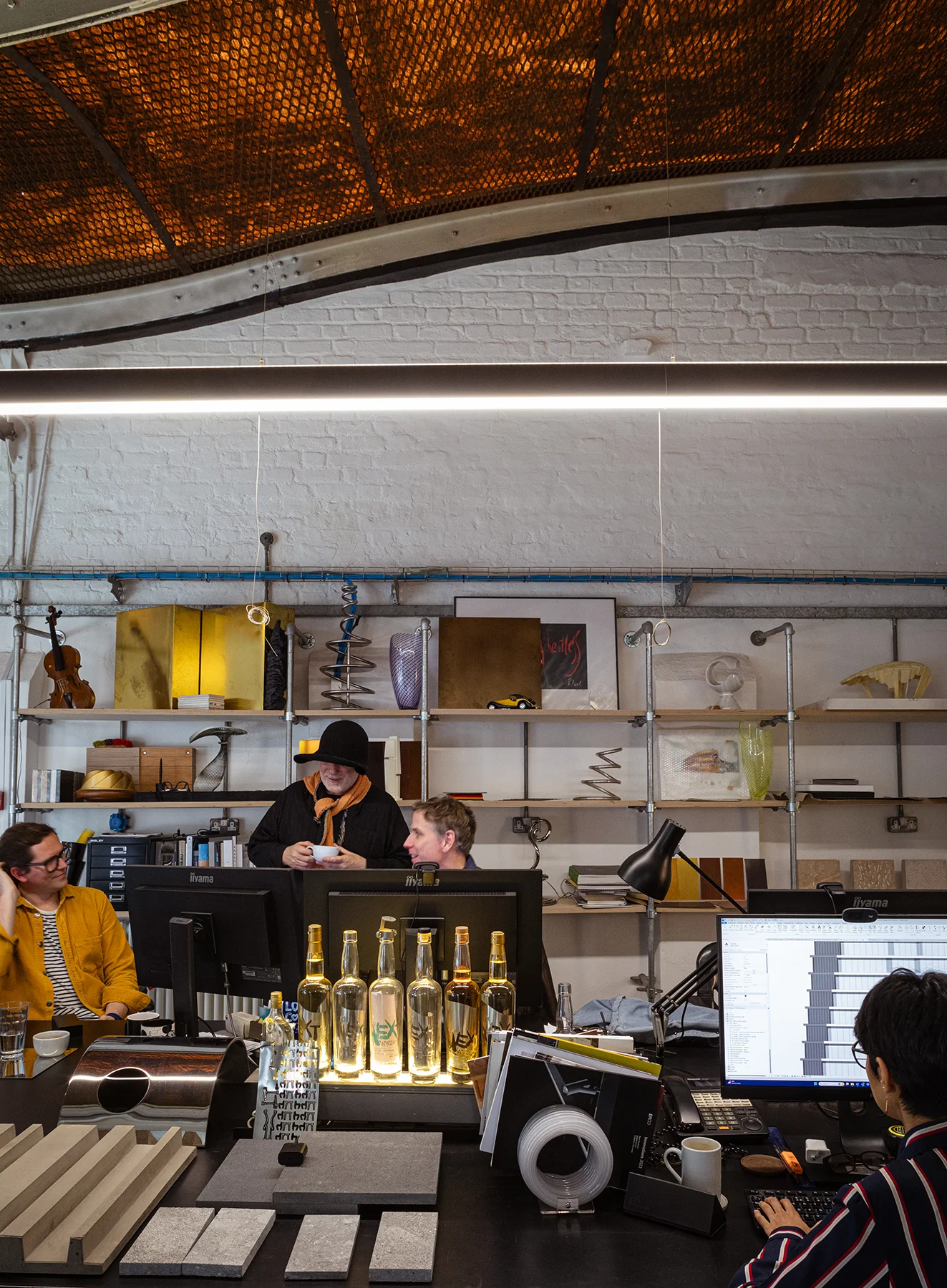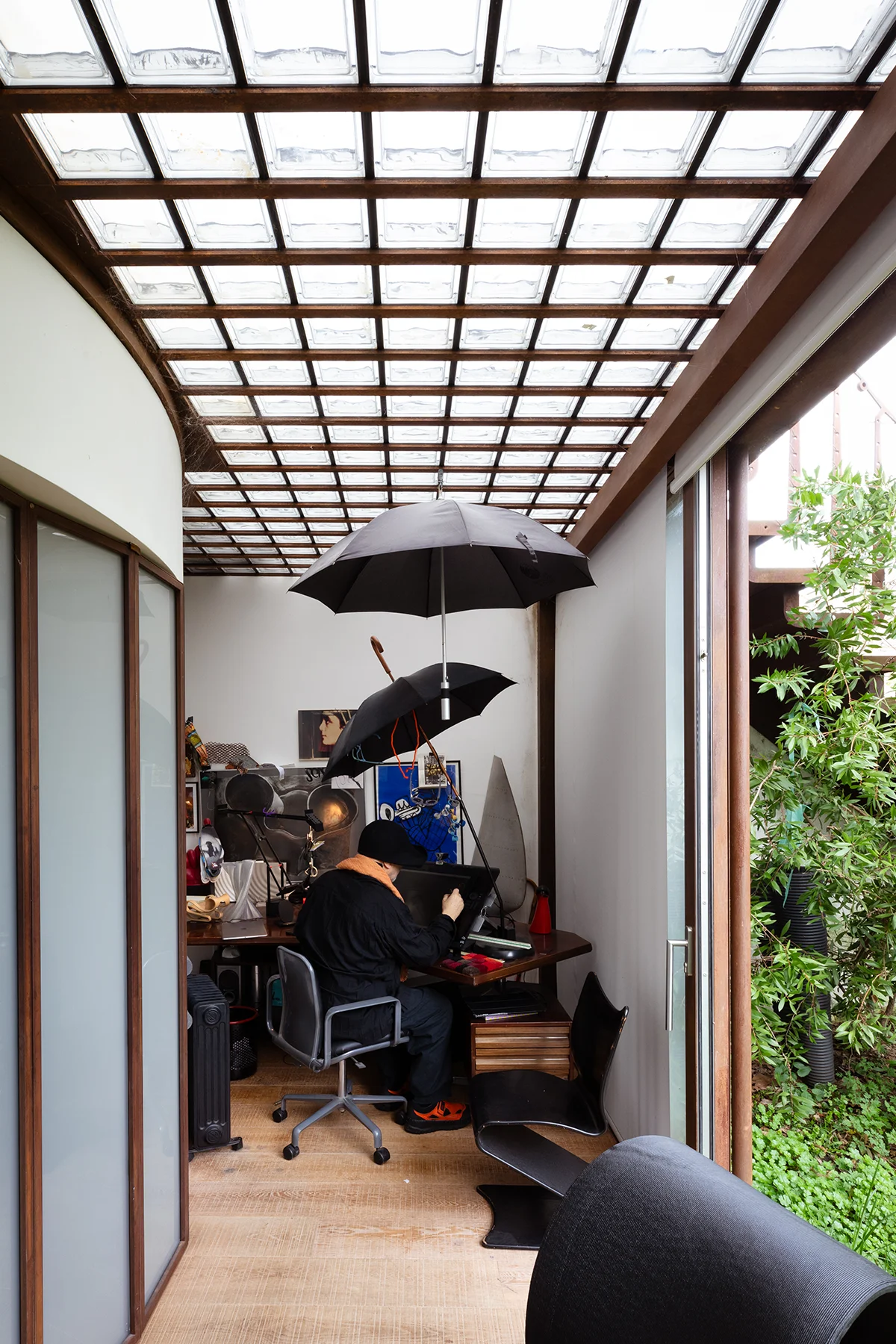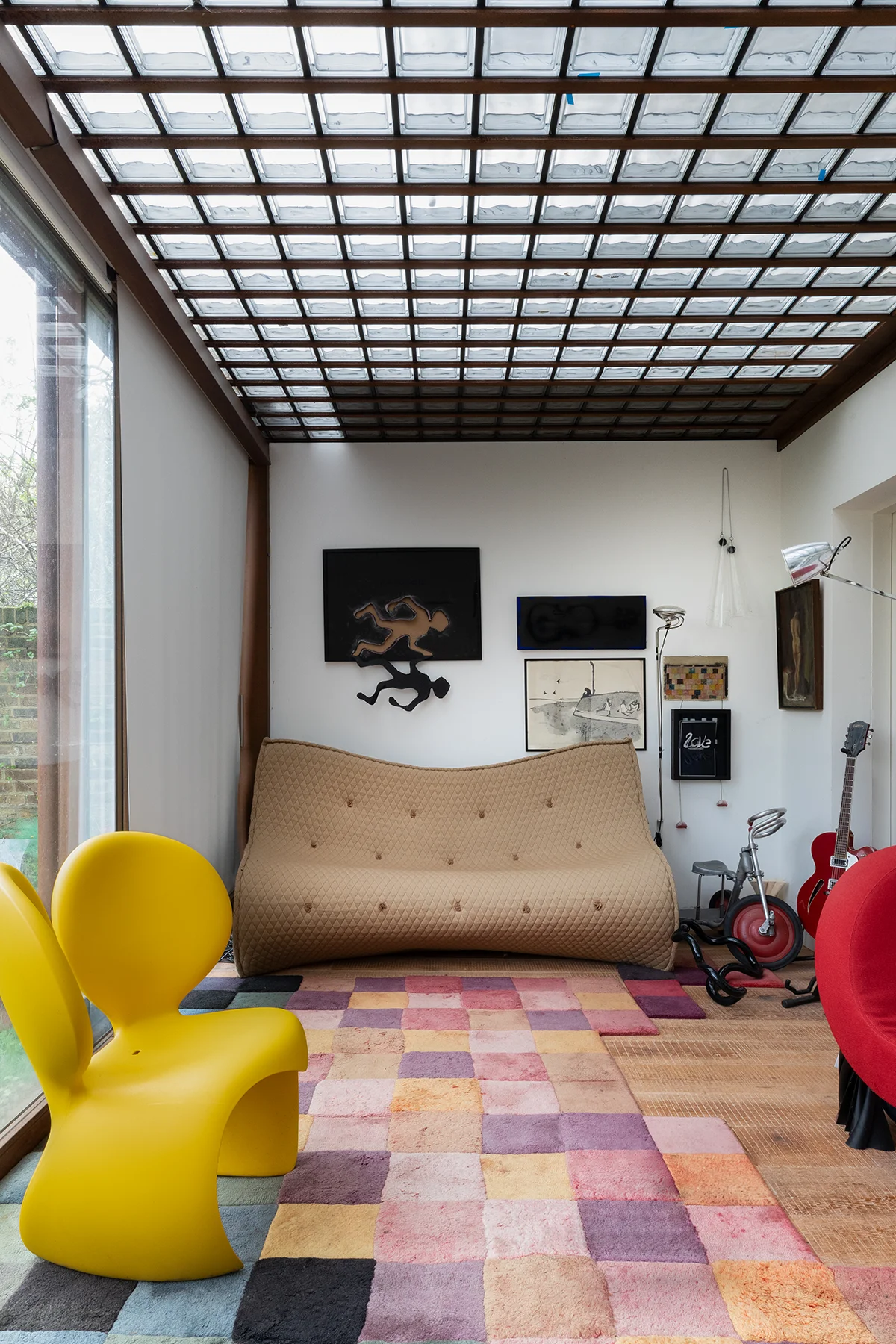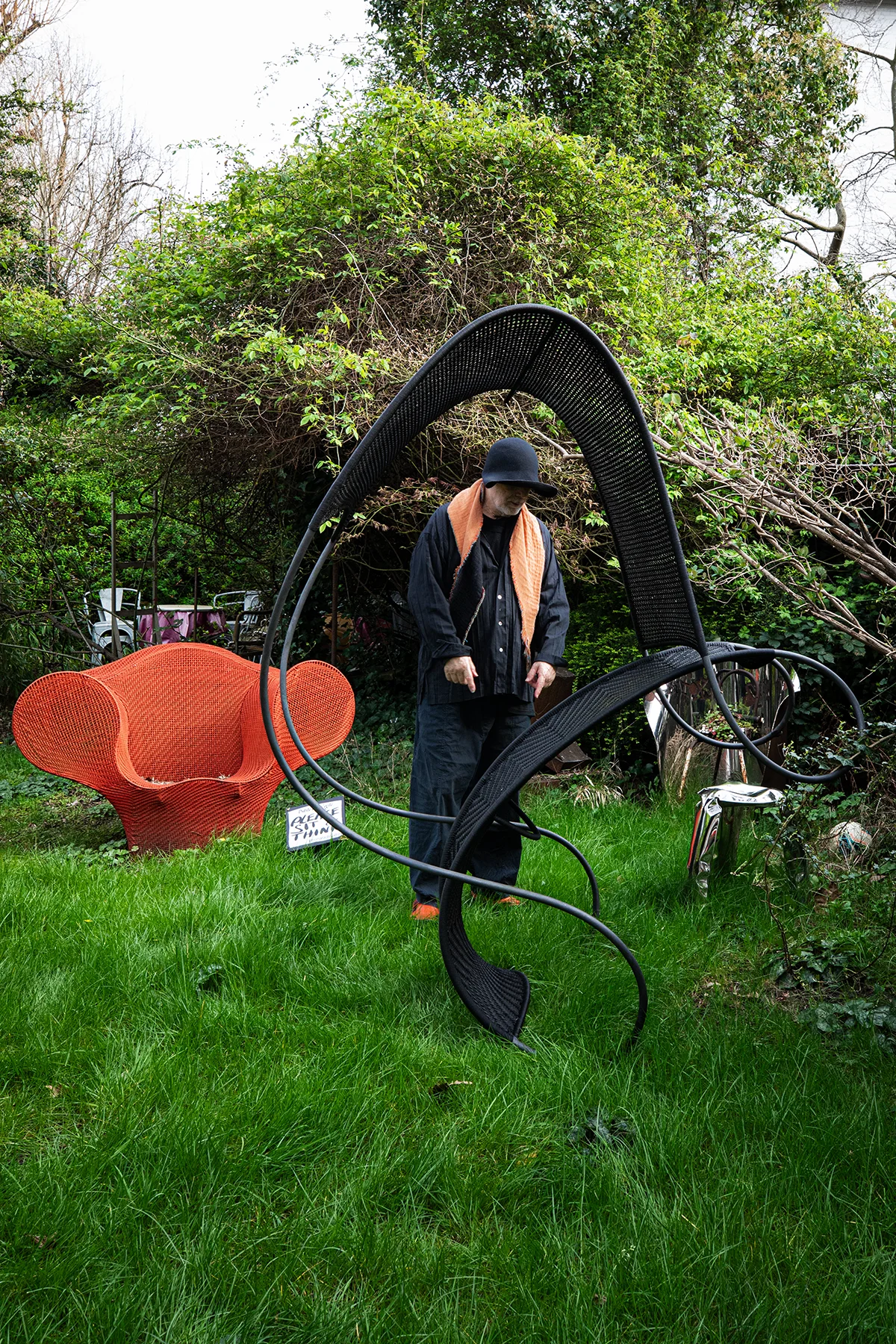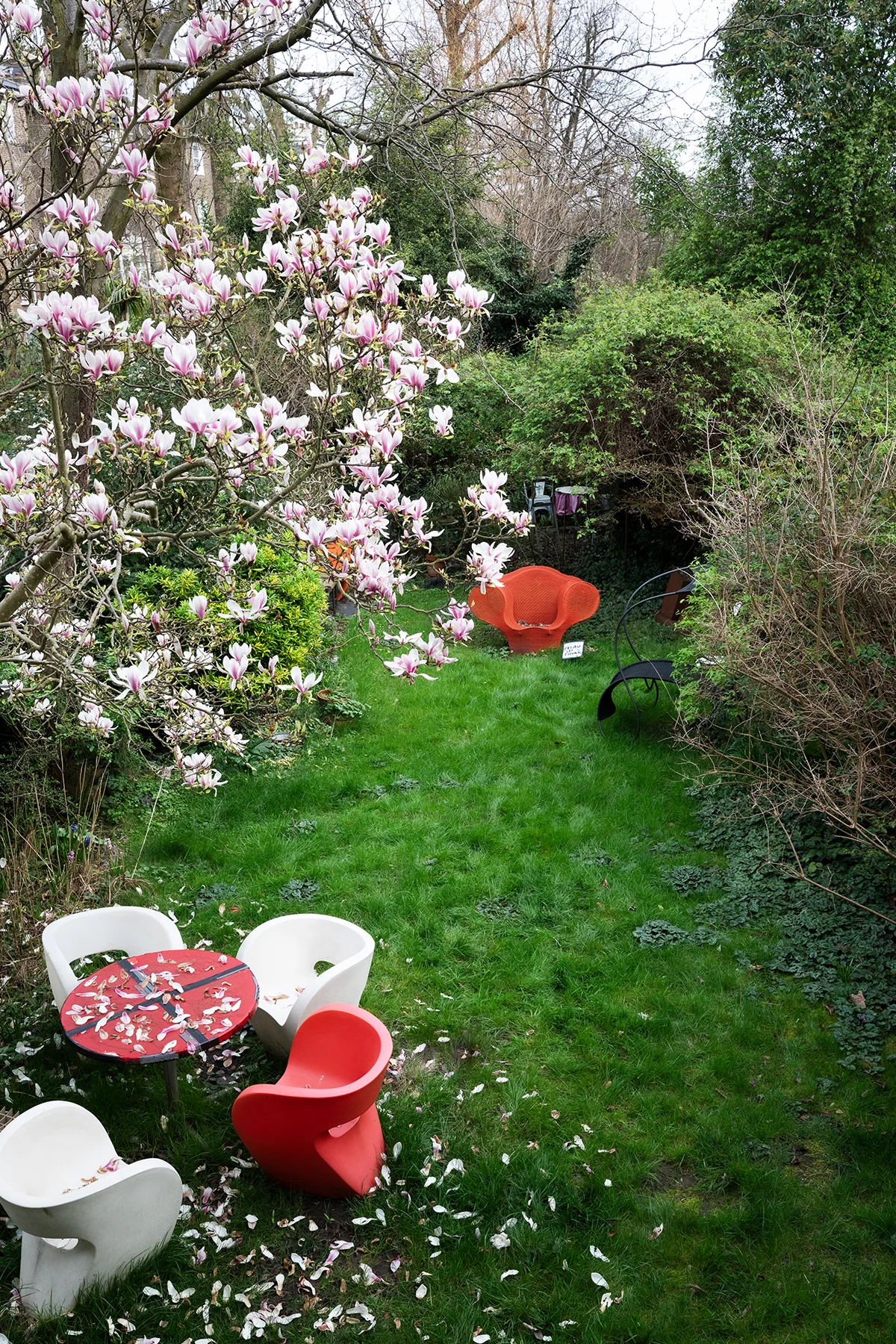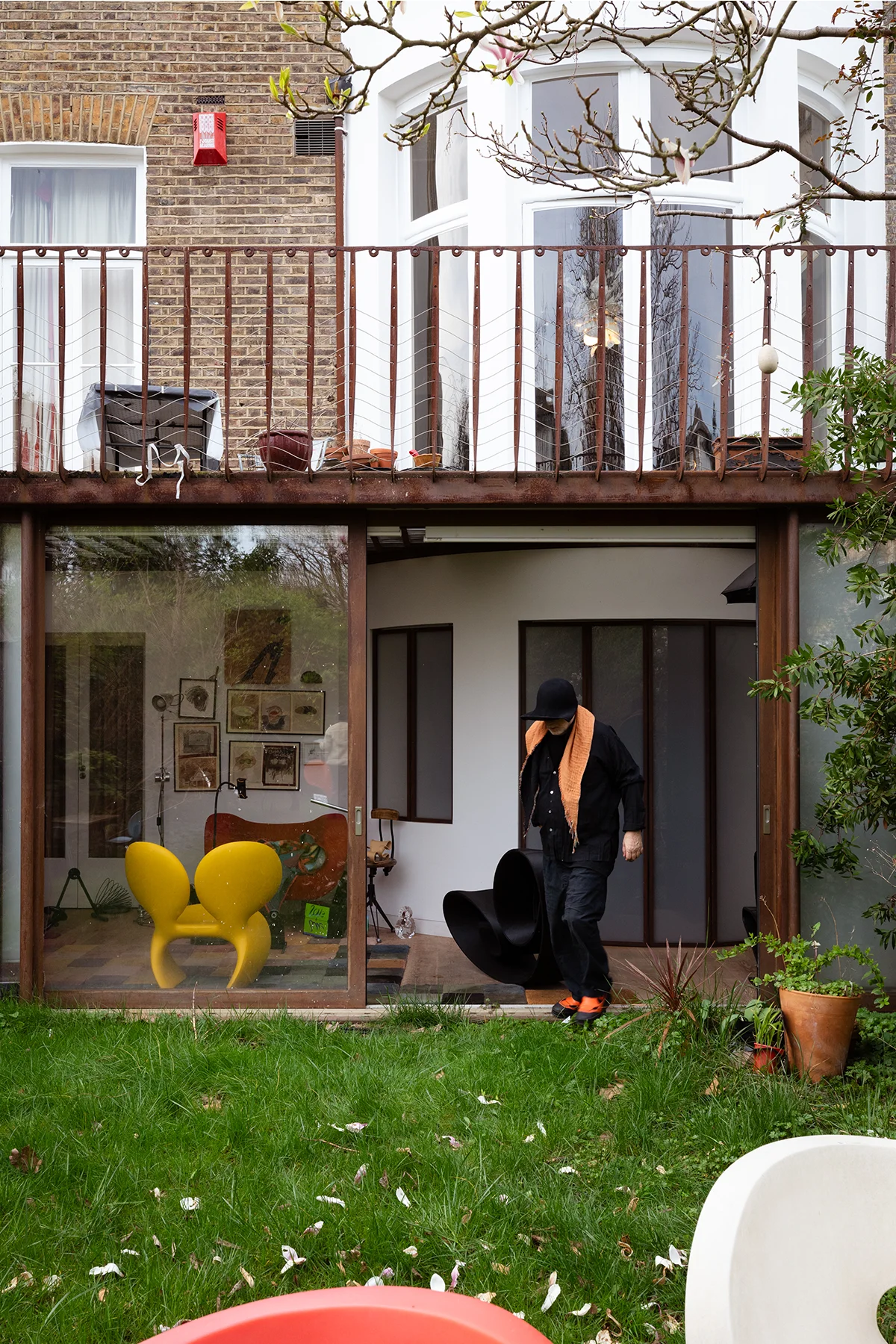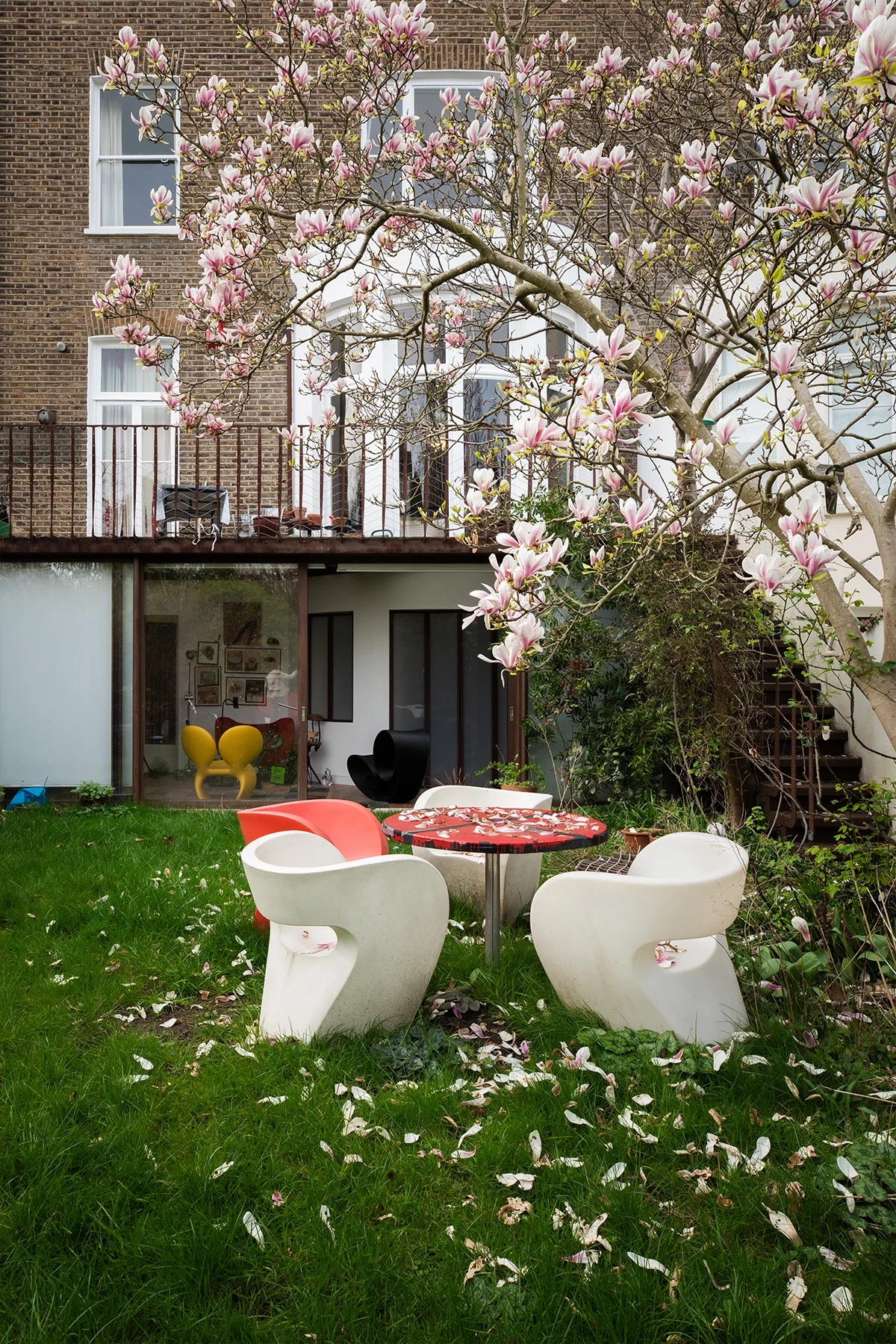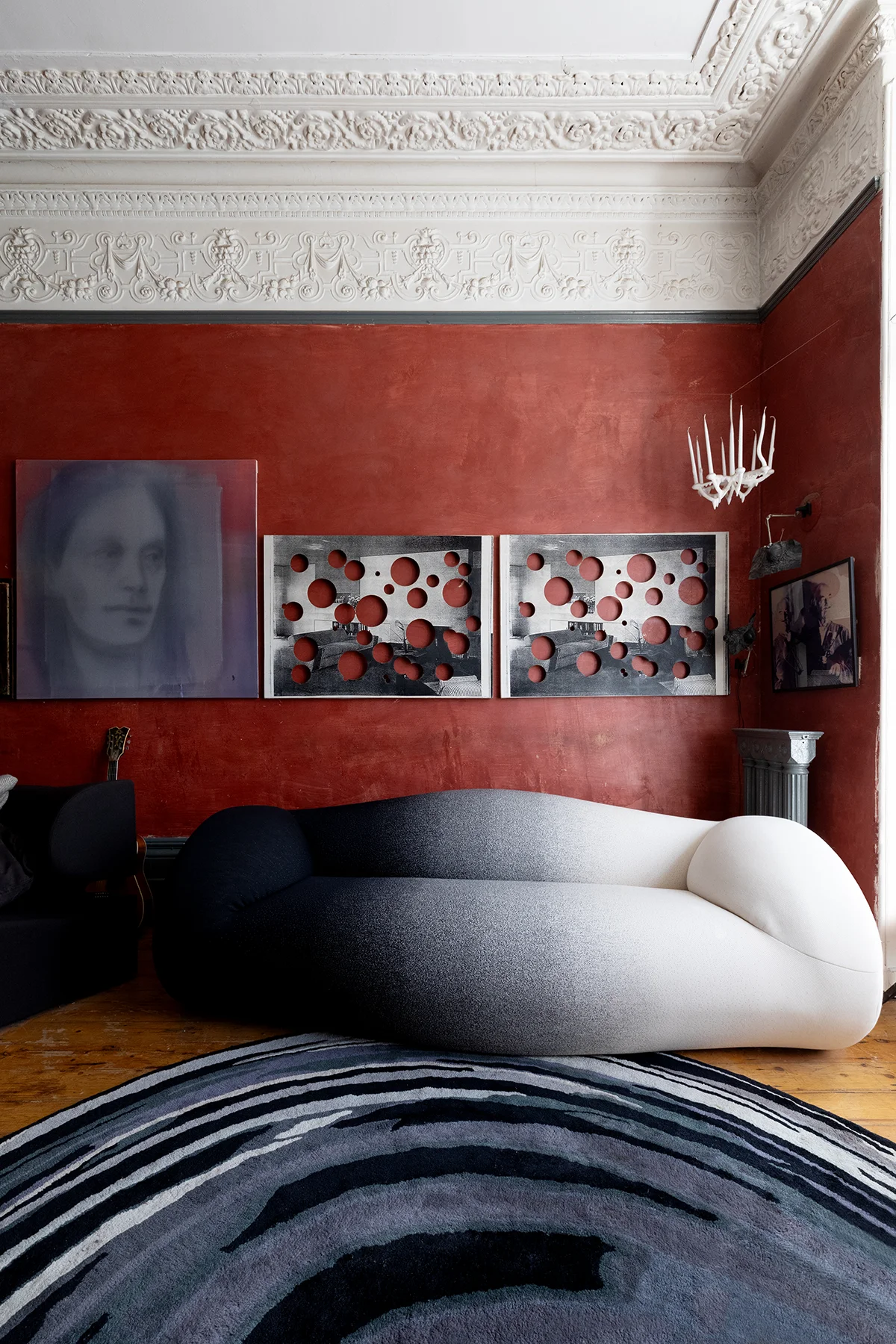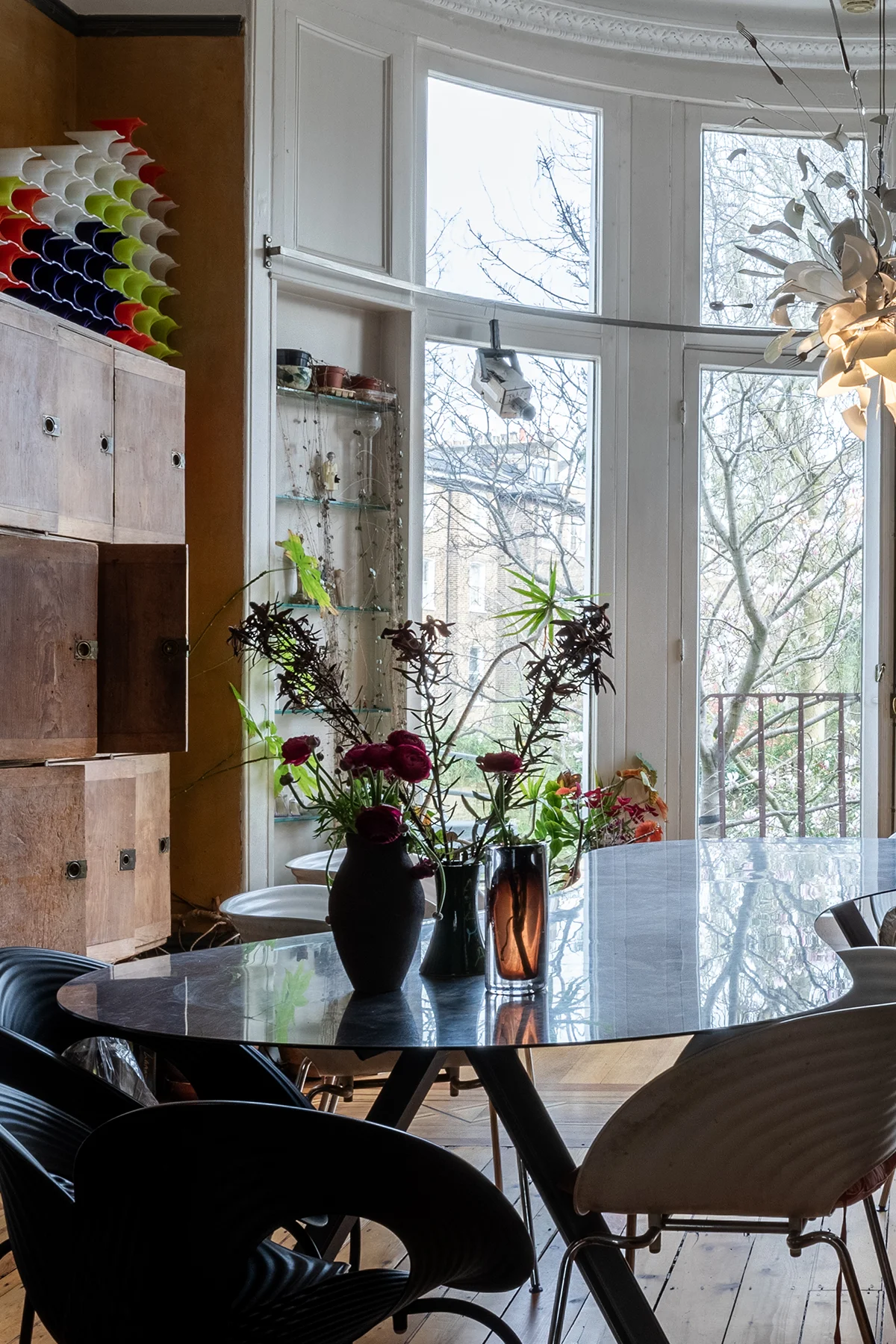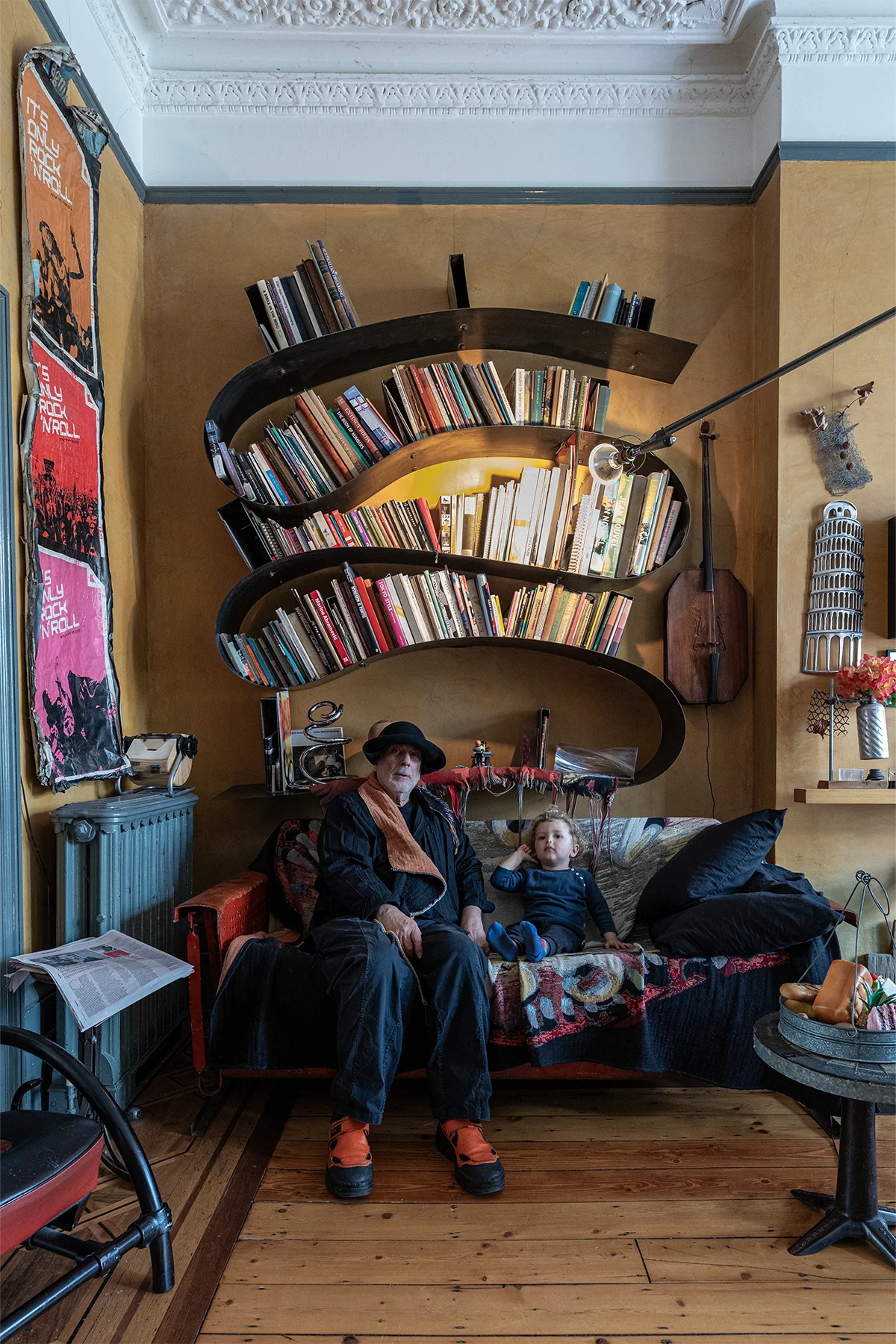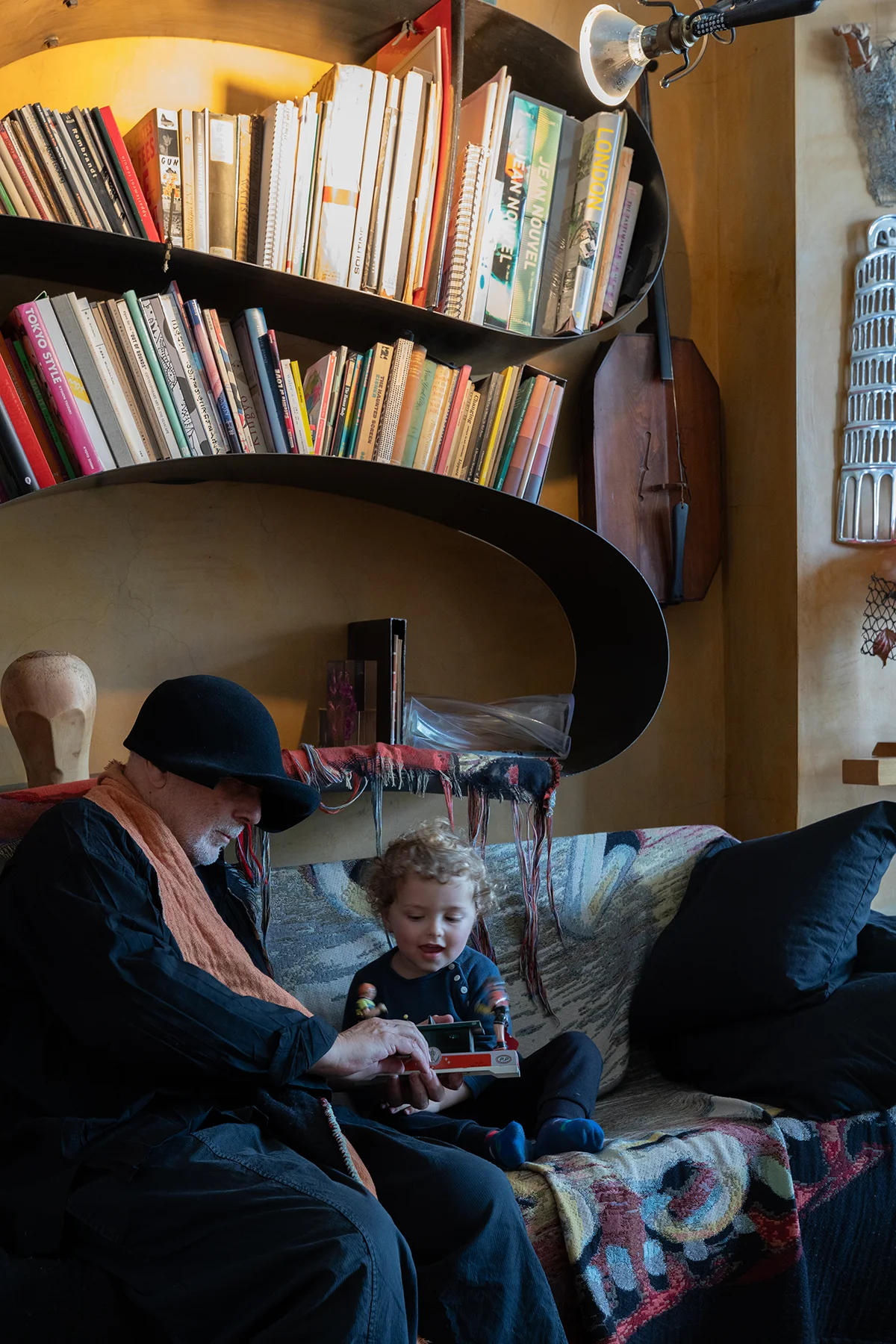Home
Unbounded Creativity
เปิดโลกแห่งจินตนาการแสนพิสวงของ Ron Arad ที่ซึ่งเวทมนตร์ค่อยๆปรากฏขึ้นอย่างช้าๆ
บ้านที่ใช้เป็นทั้งที่ทำงานของ Ron Arad หลังนี้ ตั้งอยู่แถบตะวันตกเฉียงเหนือของลอนดอน ในฐานะที่เขาเป็นหนึ่งในดีไซน์ไอคอนในหลากหลายแขนงของยุคนี้ เราคงไม่ต้องเกริ่นประวัติของเขาให้มากมายนัก เป็นเวลากว่า 40 ปี ที่เขาได้ลดขอบเขตระหว่างศิลปะ สถาปัตยกรรม ประติมากรรมและการออกแบบ ด้วยการปลดปล่อยผลงานอย่างสม่ำเสมอ โดยใช้เส้นโค้ง เส้นตรง ความถี่ และคอนเซ็ปต์แหวกแนว ผสมผสานกับการทดลองใช้วัสดุและเทคนิคแปลกใหม่อย่างไม่หยุดยั้ง เขาเป็นที่ขึ้นชื่อสำหรับการเป็นเจ้าของผลงานซึ่งมีสถิติการประมูลชิ้นงานมากมายที่มีแค่เพียงหนึ่งเดียว รวมไปถึงการคอลแล็บกับแบรนด์ระดับไอคอนทั้งแฟชั่นและอุตสาหกรรมอื่นๆ และนิทรรศการครั้งยิ่งใหญ่ที่รวบรวมผลงานของเขาในชื่อ No Discipline ที่จัดขึ้นที่ Museum of Modern Art ในนิวยอร์คและ CentrePompidou ที่ปารีส เห็นได้ชัดเลยว่าเขาเป็นคนที่อยู่เฉยๆ ไม่ค่อยจะเป็น
เพราะเติบโตมาในครอบครัวที่มีแม่เป็นจิตรกร มีพ่อเป็นประติมากร และมีพี่ชายเป็นนักดนตรี แล้วเขาจะกลายเป็นอะไรอื่นที่ไม่ใช่ศิลปินนักออกแบบไปได้อย่างไร เมื่อตอนเป็นเด็ก ทุกครั้งที่เขาวาดรูปแล้วนำไปให้แม่ดู แม่เขาจะบอกว่า “ลูกจะต้องโตไปเป็นสถาปนิกที่ยิ่งใหญ่” ราวกับว่าเธอต้องการจะปกป้องเขาจากความเจ็บปวดของการมีชีวิตแบบศิลปิน เขาจบการศึกษาจาก Academy of Arts Bezalel ในเยรูซาเล็ม จากนั้นจึงย้ายไปลอนดอน ที่ซึ่งเขาเข้าเรียนที่ School of Architectural Association โดยที่ไม่ได้ยื่นพอร์ตโฟลิโอเหมือนผู้สมัครรายอื่นๆ แต่เขาเข้าไปสัมภาษณ์โดยถือดินสอ 6B เข้าไปแล้วบอกคณะกรรมการว่า เขามาที่นี่ไม่ใช่เพราะตัวเขาเอง แต่เป็นเพราะแม่ของเขาอยากให้เขาเป็นสถาปนิก
เพราะเติบโตมาในครอบครัวที่มีแม่เป็นจิตรกร มีพ่อเป็นประติมากร และมีพี่ชายเป็นนักดนตรี แล้วเขาจะกลายเป็นอะไรอื่นที่ไม่ใช่ศิลปินนักออกแบบไปได้อย่างไร เมื่อตอนเป็นเด็ก ทุกครั้งที่เขาวาดรูปแล้วนำไปให้แม่ดู แม่เขาจะบอกว่า “ลูกจะต้องโตไปเป็นสถาปนิกที่ยิ่งใหญ่” ราวกับว่าเธอต้องการจะปกป้องเขาจากความเจ็บปวดของการมีชีวิตแบบศิลปิน เขาจบการศึกษาจาก Academy of Arts Bezalel ในเยรูซาเล็ม จากนั้นจึงย้ายไปลอนดอน ที่ซึ่งเขาเข้าเรียนที่ School of Architectural Association โดยที่ไม่ได้ยื่นพอร์ตโฟลิโอเหมือนผู้สมัครรายอื่นๆ แต่เขาเข้าไปสัมภาษณ์โดยถือดินสอ 6B เข้าไปแล้วบอกคณะกรรมการว่า เขามาที่นี่ไม่ใช่เพราะตัวเขาเอง แต่เป็นเพราะแม่ของเขาอยากให้เขาเป็นสถาปนิก
กฎเกณฑ์ไม่ใช่สิ่งที่รอนยินยอมทำตาม และนั่นคงเป็นส่วนหนึ่งของเหตุผลที่ว่า ทำไมเขาจึงไม่ได้เป็นสถาปนิกเต็มเวลา ซึ่งมักจะต้องพยายามทรงตัวอยู่ระหว่างกฎเกณฑ์ของอาคารและบรีฟจากลูกค้า ศิลปะที่ไร้ขีดจำกัดจึงเหมาะสมกับเขามากกว่า รวมถึงวิธีต่างๆในแบบของเขาเองที่ถ่ายทอดไปสู่การออกแบบ รอนเริ่มมีชื่อเสียงในปี 1981 จากการสร้างสรรค์เก้าอี้ Rover chair ซึ่งประกอบจากเก้าอี้สำเร็จรูปสองตัว ซึ่งเขาน่าจะได้รับแรงบันดาลใจจากภาพ Toro ของ Picasso และ Marcel Duchamp มากกว่าคอนเซ็ปต์การรีไซเคิลที่ฮิตกันทุกวันนี้ เก้าอี้ Rover เป็นเก้าอี้ที่ทำให้เขาได้รับการขนานนามว่าเป็นดีไซเนอร์หน้าใหม่ที่น่าจับตามอง โดย Rolf Fehlbaum แห่งแบรนด์ Vitra “ไม่ว่านั่นจะหมายความว่าอะไรก็ตาม” รอนกล่าว “แต่เมื่อสัปดาห์ก่อนหน้านั้นผมยังไม่รู้ตัวเลยว่าผมเป็นดีไซเนอร์”
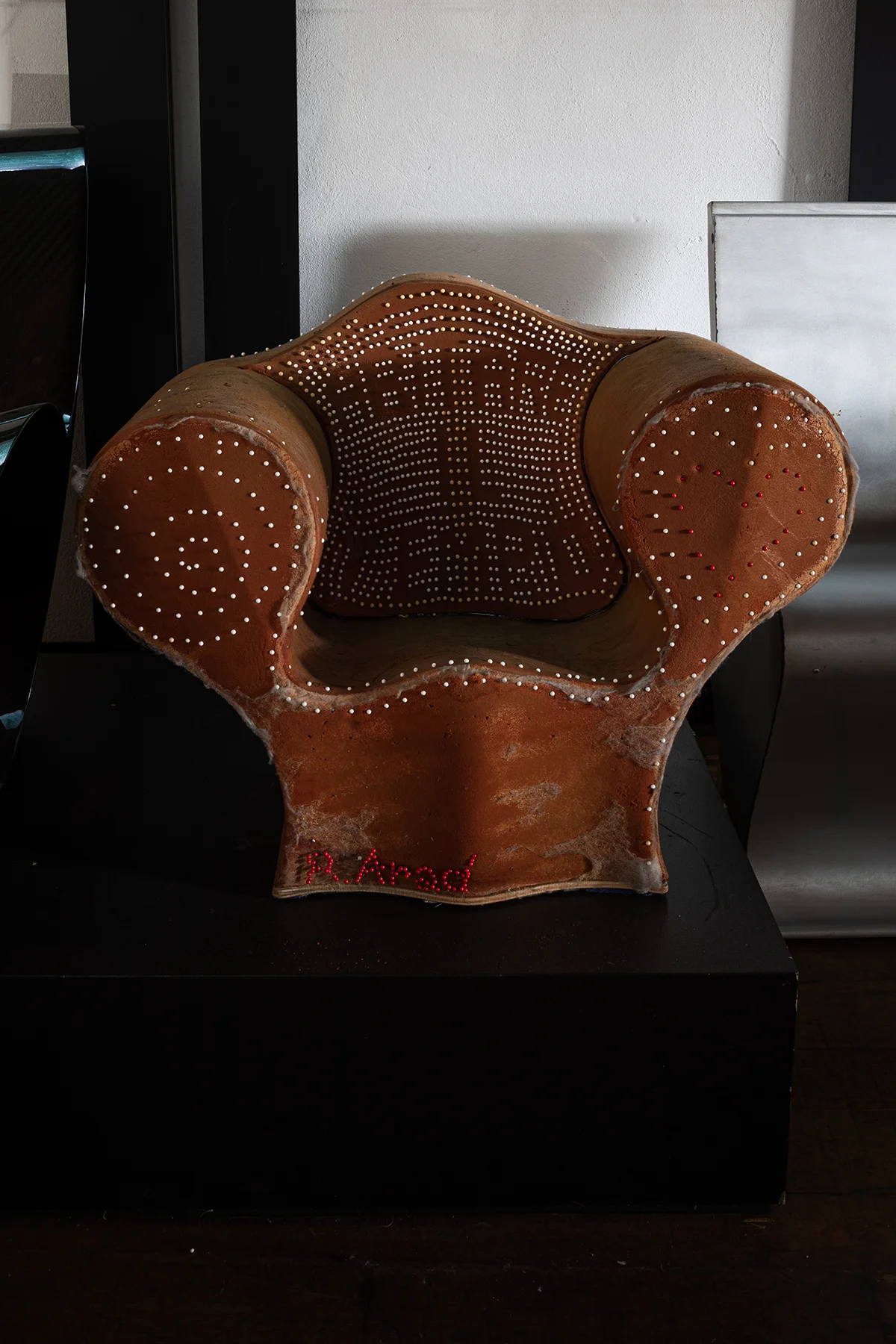
ในปี 1989 เขาได้ก่อตั้ง Ron Arad Associates ร่วมกับ Caroline Thorman สามสิบปีต่อมา สตูดิโอของเขาที่ Chalk Farm ซึ่งเคยเป็นโรงงานทำเปียโนก็ถูก “กองสุมด้วยขยะ” ตามคำกล่าวของเขา บรรดาชิ้นงานต้นแบบ โมเดล และ ชิ้นงานไฟนอลมากมายได้เข้ายึดครองพื้นที่ ความวุ่นวายทั้งหมดนั้นเหมือนเป็นภาพสะท้อนของตัวเขาเอง ผู้ซึ่งกระโดดจากโปรเจ็กต์หนึ่งไปสู่อีกโปรเจ็กต์อย่างไม่เหน็ดไม่เหนื่อย ในยุคแรกๆ สตูดิโอมีช่างทำงานโลหะอยู่คับคั่งคอยทำหน้าที่เชื่อมเหล็กและทำรูปสเก็ตช์ของรอนให้กลายเป็นจริง แต่แล้วเขาก็รู้สึกว่า “มันแทบจะกลายไปเป็นเวิร์คช็อปช่างฝีมือ” Ron จึงแทนที่เครื่องจักรด้วยคอมพิวเตอร์และปากกาดิจิตัล หลากหลายโปรเจ็กต์ถูกพัฒนาขึ้นโดยเขาและทีมเล็กๆ ซึ่งประกอบไปด้วยนักออกแบบและสถาปนิก “มันคือโรงเรียนอนุบาลรุ่นแอดวานซ์” พื้นที่แห่งนี้ถูกเติมเต็มด้วยโต๊ะปิงปองสแตนเลสที่ส่วนปลายโค้งขึ้นด้านบนเพื่อทำให้การแข่งขันยาวนานขึ้น ซึ่งแน่นอนว่าถูกดีไซน์โดย Ron
หลังจากทริปสั้นๆ บนรถนิสสัน S-Cargo ซึ่งรอนได้รับรางวัลในฐานะที่เป็นคนดีไซน์ เขากล่าวว่า “มันเป็นรถญี่ปุ่นซึ่งมีรูปทรงเรียบง่ายที่สุด ถูกสร้างขึ้นโดยเข็มทิศกับไม้บรรทัด” นำไปสู่ที่พักและโฮมสตูดิโอของเขา ซึ่งถูกเซ็ตขึ้นมาที่ชั้นล่างในช่วงล็อคดาวน์ สตูดิโอถูกล้อมกรอบด้วยส่วนต่อขยายที่สร้างจากโลหะและเพดานบล็อกแก้ว มีการจัดวางร่มลอยอย่างชาญฉลาดซึ่งถูกยึดเข้าด้วยกันโดยคานเหล็ก และกลายมาเป็นแผงกันแดดให้กับโต๊ะทำงานของเขา ที่ตรงกลางห้องเป็นพื้นโมเสกและพื้นที่ว่าง ที่นี่คือที่ซึ่งเขาใช้เป็นพื้นที่ในการสร้างสรรค์สิ่งต่างๆขึ้นมา โดยมีวิธีที่ไม่แตกต่างจากการละเล่นของเด็ก ไม่ว่าจะเป็นรูปโครงของรถ Morgan หมอน และชิ้นงานต่างๆ อาทิ เก้าอี้ของ Gaetano Pesce ใช้เป็นที่ทดสอบผ้าสำหรับรถที่เขากำลังทำอยู่ เขาใช้หูกทอผ้าแจ็กการ์ดแบบสมัยใหม่แล้วเปลี่ยนไปใช้ผลงานโดยช่างฝีมือในซีเนกัลที่ใช้เชือกโพลีเอทีลีนทอมือบนเก้าอี้ Modou “นั่นก็คือการทอ และนี่ก็คือการทอเช่นกัน” Ron กล่าวทิ้งท้ายไว้ด้วยความคอนทราสต์ของวิธีการผลิตซึ่งสรรค์สร้างความงามได้เท่าเทียมกัน
ที่นี่คือที่ซึ่งเขาใช้เป็นพื้นที่ในการสร้างสรรค์สิ่งต่างๆขึ้นมา โดยมีวิธีที่ไม่แตกต่างจากการละเล่นของเด็ก ไม่ว่าจะเป็นรูปโครงของรถ Morgan หมอน และชิ้นงานต่างๆ อาทิ เก้าอี้ของ Gaetano Pesce ใช้เป็นที่ทดสอบผ้าสำหรับรถที่เขากำลังทำอยู่ เขาใช้หูกทอผ้าแจ็กการ์ดแบบสมัยใหม่แล้วเปลี่ยนไปใช้ผลงานโดยช่างฝีมือในซีเนกัลที่ใช้เชือกโพลีเอทีลีนทอมือบนเก้าอี้ Modou “นั่นก็คือการทอ และนี่ก็คือการทอเช่นกัน” Ron กล่าวทิ้งท้ายไว้ด้วยความคอนทราสต์ของวิธีการผลิตซึ่งสรรค์สร้างความงามได้เท่าเทียมกัน
ในสนามหญ้าเขียว มีเฟอร์นิเจอร์ที่เป็นเหมือนชิ้นงานประติมากรรม ได้แก่เก้าอี้ Modou ทรงคดโค้งที่มีกรอบทำจากชิ้นเหล็กจากถังน้ำมัน คือหนึ่งในคอลเลกชั่นล่าสุดที่รอนพัฒนาขึ้นที่ดักการ์ ร่วมกับ Patrizia Moroso เป็นส่วนหนึ่งในการคอลแล็บและมิตรภาพที่ยาวนานของพวกเขา “ทุกวันคือการครบรอบของเรา” รอนกล่าว
เมื่อถูกถามว่า หลังจากระยะเวลาการทำงานอันยาวนาน อะไรคือเชื้อไฟที่ยังจุดประกายจินตนาการให้เขา รอนตอบว่า “คือการอยากสร้างอะไรบางอย่างที่ไม่เคยปรากฎมาก่อนเลย” แล้วสิ่งใดคือจุดร่วมในวิธีการคิดอันหลากหลายของเขา สิ่งนั้นคือ “ความอยากรู้อยากเห็น” รวมไปถึงอารมณ์ขันปริมาณพอเหมาะในทุกๆ ชื่อที่เขาตั้งให้ผลงานแต่ละชิ้น รอนอ้างถึงคำกล่าวจาก Oscar Wilde “มันมีผู้คนอยู่แค่สองประเภทเท่านั้นคือมีเสน่ห์หรือน่าเบื่อ” “ผมเลือกใช้คำแบบเดียวกันเพื่ออธิบายศิลปวัตถุหรือการออกแบบ” แล้วเขาก็หยิบยก Useful (ความมีประโยชน์), Beautiful (ความสวยงาม), Love (ความรัก) ซึ่งเป็นเก้าอี้โยกที่สร้างจากท่อนไม้ซีดาร์ท่อนมหึมา ที่จารึกคำคมโดย William Morris ว่า “อย่ามีสิ่งใดในบ้านที่คุณไม่รู้ว่ามีประโยชน์อย่างไรหรือไม่คิดว่าสวยงาม” เมื่อเราถามว่าอะไรคือการบาลานซ์ระหว่างรูปฟอร์มกับประโยชน์ใช้สอย “พวกมันเป็นเพื่อนที่ดีต่อกัน” เขาตอบ
การได้แอบมองเข้าไปในโลกส่วนตัวของรอนเป็นโอกาสอันหายากยิ่ง ซึ่งให้ความรู้สึกที่ทั้งสงบและอบอุ่น หรือบางทีเขาอาจจะเริ่มช้าลงแล้วก็ได้ Milo หลานชายของเขาเข้ามาเกาะแกะขอเล่นกับเขา “เขาล้ำหน้าไปกว่าผมแล้ว” รอนพูดยิ้มๆ ในขณะที่อธิบายเกมจินตนาการล้ำลึกของเด็กชายตัวน้อย แต่ก็เป็นเขานั่นแหละที่มักจะรู้สึกเหมือนเป็นเด็กน้อยเล่นก่อสร้างและสร้างอาณาจักร “ผมสเก็ตช์ภาพและสร้างสรรค์งานตั้งแต่ผมอายุแปดขวบ เพิ่งจะเป็นตอนนี้ที่ผมเริ่มรู้สึกว่าผมไม่ได้เด็กขนาดนั้นอีกต่อไปแล้ว” เราคงทำได้เพียงแค่จับตามองว่าไอเดียสร้างสรรค์ของรอน จะนำพาไปสู่ที่ไหนต่อไป เพราะดูราวกับว่าภายใต้หมวกใบนั้น ความรื่นรมย์ในการสร้างสรรค์สิ่งใหม่ๆ ยังไม่เข้าใกล้คำว่าเบาบางลงเลย ![]()
Story: Anna Bisazza
Photos: Monica Spezia/ Living Inside
A glimpse into Ron Arad’s whimsical world where magic happens one curve at a time.
This is northwest London where Ron Arad works and lives. As one of the most influential multidisciplinary figures of our time, the UK-based visionary needs little introduction really. For over forty years he has blurred the contours between art, architecture, sculpture and design through constant exploration of curves, lines, volumes and concepts combined with an incessant experimentation of materials and technological gimmicks. He is known for record-breaking auctions of one-off studio pieces. Collaborations with the most iconic industrial and fashion design brands. And a major retrospective: No Discipline, held at the Museum of Modern Arts in New York and at the Centre Pompidou in Paris. Clearly, he can’t sit still.
With a painter mother, a sculptor father, a musician brother, what else could he become? In childhood, each time he showed his mother one of his drawings, she said: “You will make a great architect.” As if to protect him from the pains of an artist’s life. He studied at the Academy of Arts Bezalel in Jerusalem, then moved to London where he entered the School of Architectural Association, despite not submitting a portfolio, as all prospective students did, but showing up with a 6B pencil and telling the commission he was there because, not he, but his mother wanted him to be an architect.
Rules are not something Ron follows, and partly why he didn’t become a full-time architect, constantly juggling between building regulations and clients’ briefs. The boundless limitations of art suited him much more. An approach he managed, in his own way, to transfer to design. His inception in 1981 was marked by his creation of the Rover chair. Assembled from two ready-mades, with more of Picasso’s Toro and Marcel Duchamp in the back of his mind than today’s concept of recycling. A chair that earned him the label of promising new designer from Rolf Fehlbaum of Vitra. “Whatever that means – says Ron – a week earlier I didn’t even know I was a designer.” Definitions too, imply boundaries.
In 1989 he co-founded Ron Arad Associates with Caroline Thorman. Thirty years on, his studio in Chalk Farm, an old piano factory, is “filled with junk” according to Ron. Prototypes, models and finished creations populate a space that is controlled chaos. An apt reflection of himself, relentlessly jumping from one project to another. In the early days, the studio was teeming with metalworkers welding and bringing to life Ron’s sketches, but then it was “at risk of turning into an artisan’s workshop” so Ron replaced the machinery with computers and electronic pens. At any given time, multiple projects are being developed by him and his small team of designers and architects. “It’s a progressive kindergarten” complete with a stainless-steel ping pong table, with ends curving upwards to make rallies last longer, naturally a design by Ron.
A short ride in his prized Nissan S-Cargo, “a Japanese car that has the simplest shape, made with a compass and a ruler” takes to his residence and home studio, set up during lockdown. On the ground level, the studio is encased by a Corten steel extension with a ceiling in glass blocks. A clever play of floating umbrellas, held together with magnets that attach to the metal beams, becomes a canopy for shielding his desk from the sun. At the centre, a mosaic carpet and empty space. This is where (he shows me in a video) he recreated, no differently from child’s play, the silhouette of a Morgan car with cushions and objects such as his Gaetano Pesce chair, to test the woven car blanket he was developing. He continues with images of an modern jacquard loom at work then switches to an artisan in Senegal hand-weaving polyethylene cords on a Modou chair. “This is weaving and this is weaving too,” says Ron, leaving the jarring contrast of production that creates equal beauty up in the air.
In his verdant lawn, a sculptural furniture garden, the black squiggly Modou, with a frame made of repurposed metal of oil drums, is one of the recent collections Ron has developed in Dakar with Patrizia Moroso as part of their long collaboration and friendship. “Every day is an anniversary with Moroso,” he says.
After so many years, what keeps fuelling his imagination? “Wanting to create things that did not exist until now.” What do his diverse conceptions have in common? “Curiosity.” And a good dose of sense of humour as suggested by the playful names he picks for his objects. Ron quotes Oscar Wilde: “‘There are only two types of people: they are either charming or boring.’ I use these same words to describe objects of art and design.” Then he brings up Useful, Beautiful, Love, an ingenious rocking chair made from a huge Cedar trunk. Engraved a quote by William Morris: “Have nothing in your house that you do not know to be useful, or believe to be beautiful.” So what’s the deal between form and function? “They are good friends.”
A rare peek into Ron’s private sphere gives a feeling of calm and warmth. Maybe he does slow down after all. Milo, his toddler grandson engages him in play. “He has already surpassed me,” says Ron smiling, while describing the boy’s vivid imaginative games. But doesn’t he too still feel like a young child playing construction and pushing boundaries? “I’ve been sketching and creating since I was eight years old, but now I’m starting to realize I’m not that young anymore.” We can only keep on watching how far Ron’s inventive ideas will go. For now, it seems that underneath that hat, his joy of creating is nowhere close to abating.

